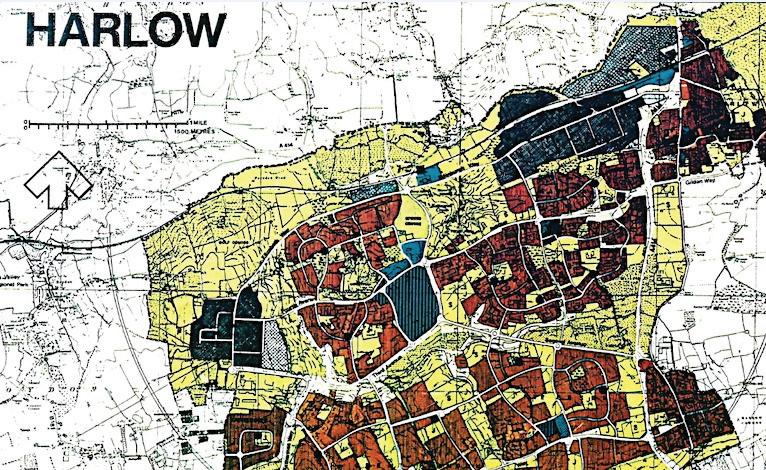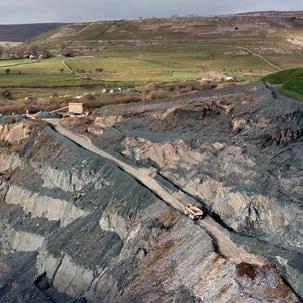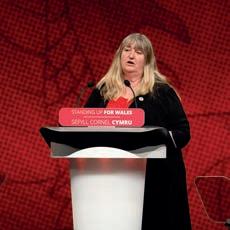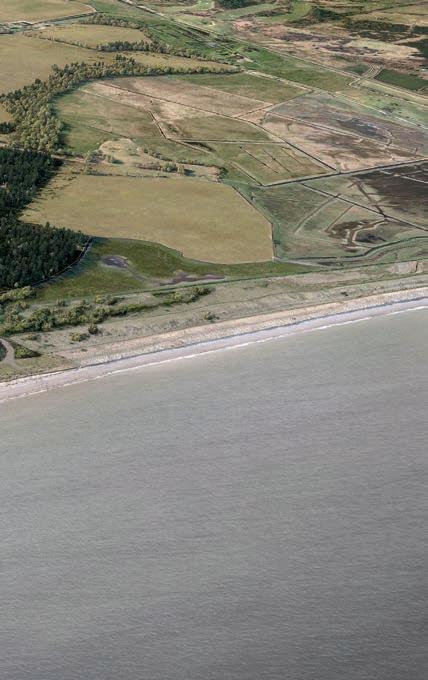lost












Natural threats Will investment zones present risks to the environment?




















Natural threats Will investment zones present risks to the environment?















Measuring up Why planning needs to change its criteria for success
Over the Hillside Could this be the most significant legal judgment of 2022?
Turn your home and garden into a winter wonderland with savings at John Lewis, Argos, B&M, Homesense and the White Company.
From experience days to gifts that will keep the family entertained all year round, save with brands including Virgin Experience Days*, Waterstones, BuyaGift, Xbox and Not on the High Street.


Food and Drink

Access discounted gift cards from the UK’s biggest supermarkets including Sainsbury’s, Tesco, ASDA, Morrisons and M&S*. You can also save on fine wines, beers and spirits from Virgin Wines.
Entertaining Save on your Christmas viewing with savings with Sky Store and Chili home streaming.
New Year’s Eve Party Planning Looking for somewhere special to spend New Year’s Eve? From cosy cottages and glamping to luxury and spa hotels, visit our Travel and Experience page to be inspired.
Don’t forget to keep an eye on our Special Offer tab to see all our limited time offers. Access these and many more benefits via www.rtpi.org.uk/rtpiplus *Terms and conditions apply to all benefits. See website
achieved by purchasing a gift card or eGift though Blackhawk shopping
Excluded Range: https://www.virginexperiencedays.co.uk/excluded-products.
behalf of RTPI by Parliament Hill Ltd.
difference Alexander Wilson and Mark Tewdwr-Jones talk digital engagement
Steve Quartermain Want growth? Planning is part of the solution
Planning is a superpower: how do we use it for good?


On soundbites, the built environment, renewable energy and future utopias






























 WORDS: LAURA EDGAR
WORDS: LAURA EDGAR
Authorities in initial discussions about having an investment zone
Investment zones feature prominently in the largely junked Growth Plan set out by then chancellor Kwasi Kwarteng under Liz Truss’s short-lived government.
At the time of writing, we were awaiting a full autumn statement from the new chancellor Jeremy Hunt, while investment zones were being reviewed by Michael Gove, once again secretary of state for levelling up.
Thirty-eight councils and combined authorities were in initial discussions about having investment zones. Several bids had been submitted, from councils as distant as Dorset and Cumbria.

The government says that investment zones aim to get the UK working, building and growing, and to accelerate delivery of the housing and infrastructure that will drive economic growth.
Businesses in designated areas within investment zones would benefit from 100 per cent rates relief on newly occupied and expanded premises, among other tax benefits. Planning regulations would be “liberalised”. This, along with the likely scrapping of the Conservation of Habitats and Species Regulations 2017 under the retained EU law (revocation and reform) bill, has sparked fear of a widespread loss of environmental and wildlife protections. The Growth Plan itself states that government will be “disapplying legacy EU red tape where appropriate” to accelerate development, a statement described to The Planner as vague.
Business-friendly ‘zones’ to promote growth are not a new idea; a variety have been tried or mooted over the years.
But, the RTPI’s head of policy and practice saysthat investment zones are not like the simplified planning zones (growth, renewal, protect) outlined two years ago in the Planning for the Future
Business rates relief proposed for investment zones
white paper published by Boris Johnson’s government. These, Richard Blyth points out, covered the whole country.
“This is a zoning system in the enterprise mould, which is where there’s a firm red line and you’re either in or you’re not in it. It’s much more like the innercity enterprise zones of the 80s,” he says.
Katy McPhie, senior associate at Blacks Solicitors, says they are “undoubtedly similar” to other such concepts, like enterprise zones and freeports (freeports can apply to become an investment zone). “All these concepts typically involve area specific incentives to developers and investors, such as tax and other regulatory relaxations designed to encourage economic growth.”
Both highlight the specific mention of housing as part of investment zones, somthing not seen in previous iterations.
Noting the scant detail available, Kiri Shuttleworth, associate director at Nexus Planning, says that what is there makes frequent reference to deregulation of
Of species at risk of extinction, with nearly half of all species in decline
the planning system and streamlining consultation and approval requirements.
“Therefore, it appears that investment zones are the latest name for a series of policies which will continue the Conservative trend of trying to redefine and further deregulate the planning system,” she explains.
Although similar to the growth areas outlined by Johnson’s government, scrapped because of their unpopularity with MPs and the public, investment zones are “supposed to be more targeted at specific authorities, and it is for authorities to express their desire to create an investment zone”.
Additionally, the proposition of tax incentives is a key difference, and authorities with investment zones would receive funding from central government via a local growth settlement.
Despite this, Shuttleworth points out that in order to “radically streamline” the planning system for investment zones, a “huge amount” of work will need to
be ‘front-loaded,’ setting out what is and is not permitted. “Local planning authorities are already chronically under-resourced, including in relation to strategic/forward planning, and in places the service is at breaking point,” she says.
Questioning how streamlined the process can be, she notes concern that such changes to an already stressed system would further delay preparation of site allocations.
In certain areas, say both McPhie and Shuttleworth, mechanisms are already available to simplify the planning process. These include the simplified planning zones set out in section 82 of the Town and Country Planning Act 1990.
When a simplified planning zone scheme is in force, planning permission for development specified in the scheme is automatically granted, though McPhie points out that they cannot be adopted for land in a national park or a Site of
Scientific Interest (SSSI).
Local authorities can also use local development orders to grant planning permission for specific types of development within a defined area, but these cannot be implemented across different local authority boundaries.
“They remove the need for developers to make a planning application to a local planning authority; this appears to be one of the aims of investment zones and therefore it seems that there is potential to create – at least in part – additional legislation which has the same aim as existing,” explains Shuttleworth.
Development corporations or a “dedicated delivery vehicle”, as the government has suggested, “could be established, providing it does not slow down development”. Mayoral combined authorities or upper-tier local authorities would be expected to fund these.
Proposals to reform development corporations were published in 2019. There was acceptance then that local authorities should be able to set up development corporations, but McPhie notes that the government “seemingly considers this does have the potential to delay development”.
However, she stresses that local scrutiny and accountability can help to validate the delivery of the objectives of development corporations – the key is finding a balance that “avoids any real or actual perception that local involvement is also frustrating a development corporation in reaching those objectives”.
Environmental campaigners have branded potential deregulation as an “attack on nature”.
“Ambitions for growth must not come at the expense of the natural world –there is far too much at stake,” warns Sue Young, head of land use planning for The Wildlife Trusts. As “one of the most

nature-depleted countries on Earth”, further deregulation will “only make a bad situation even worse”.
The government considers EU requirements to be burdensome and has made the case that they don’t necessarily protect the environment. It is clear, says McPhie, that the government sees the retained EU law bill “as an opportunity to strip away what it perceives to be ‘red tape’; but whether further deregulation is being considered for investment zones specifically is still unclear”.
While removing or reducing the requirement for environmental impact assessments (EIA) would shorten the statutory length of time authorities have to determine applications, Shuttleworth says there “is no evidence that this would in itself speed up the process as many of the issues considered as part of an EIA would still need to be considered – for example, wind, pollution, climate change”.
Reducing regulations could lead to less scrutiny of the impacts development could have on wildlife and habitats, argues Shuttleworth. This in turn may lead to consenting of development in areas that were previously protected, if sufficient mitigation is not established.
“This goes against other wider statements made relating to the environment, it is at odds with and pulls in the opposite direction to commitments made regarding climate change and goes against the focus on sustainable development on which the NPPF is based,” she stresses. “Therefore reducing regulation on habitats and other environmental matters feels like the wrong direction to take when considering the existential climate and biodiversity crisis.”
Instead, Shuttleworth suggests “increasing investment into the relevant bodies would allow them to quickly develop, and collaborate on,
Ian Harvey, founder and executive director, told The Planner that Civic Voice would oppose investment zones – “low-tax and low-regulation zones”.
“It appears that the government is attempting to remove environmental safeguards, deregulate planning, and reduce citizen input in the system in order to achieve growth at any cost. We’ll have to wait and see how many councils step forward to determine which zones these are and what this means on the ground for communities, but let’s not pretend that councils alone are enough to secure ‘local consent’. These areas cannot be chosen without meaningful consultation with local communities. Civic Voice wants to see growth and investment in our communities, cities and towns, but not at the expense of blanket deregulation policies.”
strategic solutions that would allow essential development to proceed”. Also, investment could boost capacity within the relevant bodies to accelerate response times and reduce delays.
While it is unclear what will and won’t apply in investment zones, Carl Bunnage, senior policy officer (planning) at RSPB England, amplifies the concern about investment zones involving a weakening of environmental protections.

Referencing the charity’s State of Nature report, which found that nearly half of all species are declining and 15 per cent are at risk of extinction, Bunnage
that the Habitats Regulations “are our strongest protections” for nature, safeguarding some of the most valuable and vulnerable habitats. “Any move to weaken or disapply such protections for nature would be precisely the wrong thing to do at this time.”
Relaxing planning rules could result in “yet more poor-quality place-making, and so fail to secure the nature-friendly design and development outcomes that tackling the nature and climate emergency now surely demands.”
The government must urgently provide detailed clarification “as to how it does propose to liberalise planning processes and requirements within investment zones”.
Some councils have said they don’t think investment zones are right for them, with Elizabeth Beighton, director at Boyer (Colchester) pointing to Oxfordshire County Council. It has issued a statement arguing that deregulation of planning controls and reductions in environmental protection, “which appear to be a condition of any investment zone, is incompatible with our net-zero carbon aspirations and our commitment to protect and enhance biodiversity and environmental quality, as stated in our vision”.
maintains
“It appears that investment zones are the latest name for a series of policies which will continue the Conservative trend of trying to redefine and further deregulate the planning system” – Kiri Shuttleworth
Find out more Scan the QR code to read The Planner’s latest news feed
Cutting regulations is intended to make these zones cheaper to do business, but Beighton questions whether it will attract the right businesses. As with past designations, she thinks it is likely that they will attract low-skilled jobs.
“Although there are benefits in doing so, there are invariably issues in creating a large number of low-skilled jobs – such as lower earnings and a lack of career progression. This will not necessarily deliver the economic growth that is required in these areas,” she cautions.
Building a supermarket in an investment zone, for example, might create more jobs in that area, but this could displace the workforce from nearby existing businesses rather than add to the overall employment offer.
However, if they are successfully implemented, Shuttleworth says investment zones might help to bring a greater degree of certainty on sites which are designated within them. This is “provided that the zone allocation is clear as to what is expected and is viable and the upfront work previously described has been undertaken” she emphasises.
Her colleague Shaun Andrews, executive director at Nexus Planning, added that the concept needs to align
with net-zero and levelling-up targets.
“If local authorities were provided with the support and funds to allow them to identify place-based strategies to tackle these priorities then that would feel transformational and properly joined up.”
It remains to be seen whether investment zones will survive the autumn statement, the need to find savings and a review by Gove, who insisted to Sophy Ridge on Sky News that anything that might undermine the environment is “out”.

If they are to go ahead, Blyth says the RTPI will advocate for them to have a masterplan, because “it will mean that you, as an investor, will have some certainty about what’s going to happen on the plot next to you”.

Similarly, Bunnage would like to see design codes at play in investment zones, “to drive net zero and nature recovery objectives as showcased in the RTPI/ RSPB’s Cracking the Code” which would go “some way” to supporting net zero and sustainable development.
For McPhie, their success depends on their overriding objectives. If they go beyond economic growth and are consistent with the levelling-up agenda, “then there will need to be a significant number of investment zones designated outside of the wealthier areas of the country and there would obviously need to be tangible results”.
However, if it is more about accelerating growth in areas that are already attractive for development, “then even if investment zones are successful in doing that, they may not be considered an overly successful concept if that development would have come forward anyway, even if it was delivered slightly more quickly,” she explains.
On location, Beighton adds that, to be effective, steps must be taken to identify those places where there is greatest opportunity for growth. “It is key that they need to be married with other policies and strategies both at the local and national level.”
One thing that all commentators told The Planner was that the lack of clarity on investment zones makes it very unclear how they will operate and whether they will work – we can only speculate.
Either way, it is unlikely we will be speculating for long.

Environment secretary Dr Thérèse Coffey has announced that the government did not meet its 31 October deadline to publish updated environmental targets.
These cover air, water, waste and biodiversity and are a requirement of the Environment Act 2021. In March, the Department for Environment, Food and Rural Affairs (Defra) launched a consultation on these environmental targets, which closed on 27 June.
According to the ministerial statement, more than 180,000 responses were received, “which all needed to be analysed and carefully considered”. However, because of this
volume of material, the government “will not be able to publish targets by 31 October, as required by the act”.


Coffey said the government “will continue to work at pace in order to lay draft statutory instruments as soon as practicable”.
Read the ministerial statement: bit.ly/planner1112-environmenttargets.









Note: In our last edition, one of our stories transposed the initials of RiverOak Strategic Partners (RSP). Our apologies to RSP, and to professional services firm RPS, for this oversight.)

Consultations launched in Northern Ireland
They were published ahead of the deadline by which the country’s politicians should have restored the devolved government. At the time of writing, a date had not been set by Chris Heaton-Harris, Northern Ireland secretary, for an election.
John O’Dowd, former infrastructure minister, announced two public consultations on 27 October, a day before the deadline to reconvene. One considers introducing a statutory power for councils and the DfI to provide validation checklists for planning applications. The checklists are to improve the quality of applications being submitted and speed up the overall processing times for applications.
O’Dowd said introducing validation checklists will result in “good quality and complete planning applications” entering the system, which will enable councils and the DfI to make faster decisions.

The second seeks views on DfI plans to revise permitted development rights to make it easier for homeowners to install low-carbon heat pumps.
DfI consultations can be found here: bit.ly/planner1112-consultations.
Th e Welsh Government plans to establish a publiclyowned renewable energy developer to focus initially on onshore wind farms on the government’s woodland estate.

Th e renewables company is scheduled to be up and running by April 2024, climate change minister Julie James told the Senedd Cymru.
She insisted that surplus funds generated by the new developer would go back into the public purse “to be reinvested in improving energy effi ciency in homes in Wales and creating good quality, home-grown, clean energy jobs”.
She noted that, to date, Natural Resources Wales has overseen the installation of
four projects totalling 441 megawatts of onshore wind, with another 134MW still in development.
“Alongside setting up the developer, we will develop a portfolio of projects, engaging at an early stage with communities and local authorities,” James told the Senedd.
“We will also be looking in detail at the benefi ts that this approach will deliver. We will work with those who live near projects to defi ne community benefit proposals that really make a diff erence to their lives.
“We will also work with Natural Resources Wales to make sure that those projects contribute to tackling both the climate and the nature emergencies.”
Dave Walsh has decided to retire early from his position as chair of An Bord Pleanála (ABP).
Walsh commented: “It has been a privilege to lead An Bord Pleanála over the last four years, and after 27 years of public service, I believe now is the right time for me to embark on the next chapter of my life and to focus on other priorities.”
Housing and local government minister Darragh O’Brien must appoint both a new chair and a deputy, because the process of finding a successor to former vice-chair Paul

Hyde has begun. Hyde resigned in July following allegations of conflicts of interest, which he has always denied.
The minister thanked Walsh for 27 years working for the ABP and, before that, the civil service.
The minister said: “Critical reforms are required to strengthen the board’s systems and processes and restore public confidence in the ABP.
“This will continue to be progressed as set out in the action plan for An Bord Pleanála which was recently agreed by government”.
O’Brien is also searching for civil servants to fill other gaps on the board temporarily until a new, open-competition system is in place.
The revised draft National Planning Framework 4 (NPF4) has been laid before the Scottish Parliament, accompanied by an explanatory report.
Proposals in NPF4 are designed to: support emerging low-carbon and zero emissions technologies; enable more renewable energy generation; help rural communities grow; and regenerate city and town centres.
Andrew Trigger, RTPI Scotland’s convenor, said the framework “would usher in a new plan-led era that can make sure our towns and cities are
greener, healthier and more vibrant”.
“We hope that, through this period of parliamentary consideration and debate, MSPs recognise the important role that the framework and planning can play, ensuring it is at the forefront in Scotland’s green future.”
However, Trigger added that to make this vision of Scotland to 2050 a reality, “we need to provide the appropriate resources to our planning departments to prepare local development plans and manage planning applications to guide development appropriately”.

A neighbourhood comprising 471 homes – a mix of houses and flats, has been approved by Swansea Council. They will be built to the north of the city.
Cairn Homes has lodged plans for a large-scale flats and hotel scheme on former RTÉ land at Montrose in Donnybrook. The developer is seeking planning permission for 688 properties. 3
The Department for Infrastructure has announced the preferred route for the second phase of Belfast Rapid Transit (BRT2). This will see the Glider service extended to the north and south of the city.
The Planner reports every week on planning news from across the UK and Ireland. Scan the codes for the latest news feed for each country, or to sign up to our weekly News By Nation newsletter.
Glasgow City Council has granted planning permission in principle for a development for Yorkhill Quay on the northern banks of the River Clyde. It includes 1,100 new homes for open market, build-torent and co-living.
Prime Minister Rishi Sunak has reinstated the moratorium on fracking that was lifted by his immediate predecessor Liz Truss.
We understand that Local Planning Authorities will play a fundamental role in delivering biodiversity net gain. On constrained sites it may not always be possible to provide onsite net gain. The Green Offset platform can help identify land for the potential provision of net gain enhancements.



We already have over 40,000 hectares of land registered by Offset Providers who are interested in the opportunities that BNG could offer. For more information please call 07584 707 294 or email



















In the temporary absence of planning-related political drama at Westminster –the UK government was all about settling things down a bit as we put this edition to bed - my attention turned to tech-related thoughts sparked by the RTPI’s World Town Planning Day event.
The Planning for Tomorrow’s Environment documentary is part of a series of resources aimed at presenting planning to the general public in a more digestible, visually stimulating manner. Sumptuously shot, and with drone footage to the fore, it’s really good. Well chosen case studies, too, with RTPI President Timothy Crawshaw a reliably engaging guide. (See p.66 for a link.)
What struck me came from the debate after its initial screening. First, the contrast between what many people think of planners (drab, procedural, probably subservient to other departments) and what

planners think people should think of them (resourceful, creative, nothing less than key to our future environment).
And then, the promise of plantech as a solution, in particular tech tools, with or without artificial intelligence, magicking away complexities of process so that planners are finally afforded the space to consider the space.


Yes, Planning for Tomorrow’s Environment and its associated content can perhaps take public perceptions of planning to another level; but calls for better resourcing (also brought up in this debate, and indeed across the page) are likely, for now, to come up against a hard economic wall. Perhaps it’s in the efficiency promises of plantech that we’ll see the real strides made in improving planning’s lot in 2023.











Martin Read is editor of The Planner — martin. read@theplanner.co.uk

Ilike the tidy infographic the government produced alongside the latest land use statistics for England (see page 52). It’s neatly shows how land is apportioned – and seems to provide a robust response to the often cited complaint that “They’re concreting over our countryside”.

For what the stats confirm is that just 8.7 per cent of land is ‘developed’, 91.1 per cent not. About 63 per cent is farmland, 20 per cent is forest, open space and water. Less than 5 per cent is residential. What’s the problem? Let’s build!
Were it only so simple. A more rounded view of land use requires knowledge of land ownership and access. What the stats don’t explicitly tell us is that around 95 per cent of the English population exists on around 5 per cent of the land. Around 92 per cent of England is off limits, thanks to the poverty of our right to roam laws. And 70 per cent or so is owned by less than 1 per
cent of the population.
This information distils, rather than dilutes, the “concreting over our coutryside” argument For most of us, most of our experience is being surrounded by built development: it’s all we see when we look out of our window; it’s 90+ per cent of what we experience. And most new build intensifies or extends what’s already there.
Objectively, we know just a small proportion of England is built on. But subjectively? For almost all of us, it doesn’t matter that most land is undeveloped. That’s not what we wake up to every day.
I always think it’s worth keeping this in mind when discussing housing and land use. These tend to be abstract conversations. But lived experience – the opposite of abstract –should always be a factor, too.

Simon Wicks is deputy editor of The Planner — simon.wicks@ theplanner.co.uk



Realising the promise of plantech can be what improves planning’s lot in 2023
In which our writers reflect on what they’ve learned while creating stories for The Planner over the past two months.
Stats are great, but can we really understand them without lived experience, too?
reat, e d ved e, too?


We are constantly reminded that a week is a long time in politics. But never did that tired idiom feel more appropriate than in October. The result of the shifting political landscape gave us Prime Minister Rishi Sunak, the first leader of Indian-origin to take the top post in Britain. Whatever your political leanings are, we can all pause to celebrate what an achievement that is for the diverse society we live in.

However, with the Autumn Statement appearing around the corner, this pause will be heavy but shortlived. We continue to work hard to ensure that our members’ interests are represented, and are reassured by Prime Minister Sunak’s opening gambit –putting levelling up back on the agenda and tasking Michael Gove to manage it.

These ambitions will come alongside pledges Prime Minister Sunak has already made to fix our economy and deliver on the Conservative Party’s 2019 manifesto. But if he wants to realise these ambitions, he will need to provide clarity on planning reforms as well as adequate resources for the planning system.
These measures will not only be essential for an effective and robust
planning system, but for you, our members, who have shown resilience and continuous, consistent dedication to your profession. We hear your concerns, that continued uncertainty will only delay plans and projects your communities so clearly need.
We’re working to demonstrate to the government the work planners can do to bridge the gap between ambitions to level up and real projects that provide homes, encourage inward investment and enable community life.
This month, we’ve taken to the international stage to show the positive impact that our members have in creating sustainable and beautiful places both in the UK and around the world. During the second week of November, the RTPI team will be visiting Dubai to raise awareness of the institute as an international membership organisation and launch the second iteration of Planning is Global.
There are up to 1,500 RTPI Members living and working around the world, generating economic growth in both
the countries they work in and for UK-based companies and universities exporting skills, experience, trusted advice and world-class solutions to global issues.
Our trip to Dubai will demonstrate our global authority while exploring possibilities for memberships and relationships in the region. Only by working together will we tackle the urgent issues of the age, including climate change, poverty reduction and the challenges of rapid urbanisation.




A digest of planning-related material from across the media spectrum. Educational, entertaining, useful or simply amusing, The Planner humbly submits the following items, but if you think you’ve something that should


The new season of the Build Smart podcast discusses how digital technology can help architects, engineers, builders and planners create more efficient buildings and smarter cities. Its weekly episodes are co-hosted by Patrick MacLeamy, chairman of buildingSMART International. as well as former chairman and current CEO Emeritus of architecture and engineering consultancy HOK, who “shares stories and lessons from his 50-year career”. There’s a strong emphasis on business growth and resolving strategic and operational issues, as well as a focus on the evolution of technology and its application in the construction industry.

Planning Law with Chickens


A hydrologist, a mayor and a soldier walk into a room – not the start of a planning joke, but the premise of this Polish language, fictionalised version of the real-life 1997 ‘Millennium Flood’, which devastated parts of Central Europe. Flood banks have never seemed so dramatic as brooding characters scramble to react. The series looks at decisions made at local and national level that led to the flood being so impactful.
This US planning consultancy’s channel is wide-ranging, but here it takes as its starting point that designing places around cars is, well, a bit old hat. It’s interesting seeing this problem addressed from an American perspective, with episodes focusing on (for example) ‘strengthening beloved walkable places’, ‘promoting people-centred design’, ‘creating communities of real neighborhoods and diverse districts’.
Here’s Town Legal’s occasional take on good, bad and misunderstood planning law decisions. It’s hosted by Town’s Victoria McGeegan, senior associate, and Nikita Sellers, associate. To be clear, the podcast is wide-ranging with only a passing nod to poultry. However, Victoria tells us that planning has seen “a surprisingly number of chicken-related cases” recently. She also owns the following chickens: Ash, Marianne, Palmer and Matilda. (“They love planning law too.”)
feature here, let us know.
Cities Alive
Can we create cities that are safer, more inclusive, and equitable for women? Here’s Arup’s report positing the view that “a genderinclusive and responsive approach to urban planning and design is essential to the future of our cities”. What’s needed? The increased participation of women in urban governance, planning, and design so that “cities will become safer, healthier, fairer and more enriching spaces for all”.
ort eroach r


























RIBA + VitrA Talk: Carlos Moreno and the 15-minute city






Carlos Moreno has earned recognition as a scientist with a unique approach to urban issues. This (free) Royal Institute of British Architects talk sees Moreno present on the concept of the 15-minute city. (“Our acceptance of the dysfunctions and indignities of modern cities has reached a peak. We need to change that, for the sake of justice, wellbeing and the climate.”)






Founded as a new town soon after the Second World War, Harlow is based on the south bank of the upper Stort Valley. Its new town architecture and status has been the subject of various documentaries. This event will tell the story of the origins, planning and subsequent development of Harlow New Town. It’s being held at the Harlow Museum & Walled Gardens.

This book traces the evolution of urban form, serving as a reference of city design while also acting as a polemic about the necessity for the recovery of the city and contemporary urban architecture. It ranges from the planned cities of Greece and the Roman Empire through the latemedieval Bastides, Renaissance cities, and Baroque new towns, to the urban planning strategies of the 19th and early 20th centuries.

Here, architect and urban planner Meriem Chabani explains her view that “deconstructing Eurocentric trends in design can create better urban spaces”. There is, she submits, a generalised global view of what an apartment should be - but for nonWestern populations, rooms are not used in the same way, so ultimately different architecture is possible, says Chabani. (This video comes via the EUfunded Euronews.) e and n es d and s, ng h
De Eu tre He an Me exp tha Eu in d bet SFA ONLINE November / December 2022 | The Planner | 19 Shutterstock
Now then.
In the early 1980s, the Audit Commission published a review of “quality” in the development control process and mentioned in passing that popularity was an unachievable objective for planners. Who knew?!
They argued that this was because planners were always faced with making decisions that someone would disagree with; planning is seen negatively and, for some time, this has also been the rhetoric of the government. It’s time this stopped.
If you want growth, planning is part of the solution. Perhaps, rather than promoting plan-free, or planninglite zones, investors would feel more confident if there were ‘well-planned zones’ – areas where they know what’s planned, when it’ll happen and they can be confident of timely decisions which support delivery, including infrastructure coordination. Confidence is key to success in planning. This is not just about wanting planners to be more valued, but wanting planners to step up and use their skills positively.







One thing that might help enormously would be if the government stopped ‘talking’ about resources and ‘reviewing the situation’ and actually did something. We’ve heard that a review is under way but a more transparent process would help. I’d hate for someone to advise ministers that things are improving –based on expenditure, for example – when the real experience is that local planning departments are struggling to recruit and retain staff and developers are saying they can’t even get to speak to planners.

Just how difficult can it be to, let’s say, invent an algorithm to apply to councils? Perhaps a ratio of applications to officer, plus a forward planning team proportionate to the size of the authority; add a few for enforcement and share a few on specialist skills and – hey presto! –you might have a baseline for how many planners you need in England. Take off the known public sector









planners, add the replacements needed for retirements and churn and, however crude the figure, you have an idea of the gap. You then work to fill this with financial support for courses, apprenticeships, and cross-professional training, etc.
Scotland did something along these lines in July’s Future Planners Project Report commissioned by the Scottish government and written by the RTPI and Heads of Planning Scotland. Its conclusions include that 700 to 800 planners will be needed over the next 10 to 15 years.
Launching it, Scottish planning minister Tom Arthur said: “It’s an exciting time for people to be entering the planning profession as we complete work on Scotland’s fourth National Planning Framework and look to reposition our planning system to face up to the big challenges around climate and nature. I am very well aware of the importance of having effective highperforming planning services to make that happen.” Now that’s more like it.
“One thing that might help would be if the government stopped talking about resources and actually did something”
STEVE QUARTERMAINwas formerly chief planner of England and is now director of Quartermain Ltd
“Perhaps, rather than promoting planning-lite zones, investors would feel more confident if there were ‘well-planned zones’”
“Perhaps plannin fee were ‘w
If there is one phrase I’ve come to hate more than any other, it’s “planning is political”. Although undeniably true – I’ve attended far too many planning committees to claim otherwise – it implies a mercurial style of decision-making that places political expediency above the merits of the scheme under consideration.

It’s a saying that has come to tarnish both planning and politics – two systems with the ability to change things for the better that, far too often, seem to settle for bringing out the worst in each other.

It’s time to reframe the debate; to retire “planning is political”. Instead, we should start thinking of planning as a superpower. Now this may sound farfetched – of course, planning doesn’t have the power to stop a speeding bullet, leap tall buildings in a single bound or turn into a giant green rage-monster. But it can be genuinely transformational.



I’m not just talking about major developments, new towns or
















regeneration schemes. Even small projects can make a real difference: the extension that allows a child to have their own bedroom; the supermarket that anchors an ailing town centre: the community centre that gives local young people a place to come together. Even the smallest decisions can resonate through communities in powerful ways.
Even small al difference: the to e town centre: that gives
With great power, of course, comes great responsibility. Such a framing may make some committee members take their training sessions a little more seriously (I once heard a councillor accuse a planning officer of inventing the tilted balance because “it isn’t in the NPPF”). The country is currently facing a plethora of interrelated crises –housing, biodiversity, water and nutrient neutrality, climate change, food and energy security, to name but seven.
Planning, used wisely, can be the key to resolving them.
Placemaking can be a power for good. But, like most superhero origin stories, it will have to survive the current existential gloom in order to
achieve its full potential. However, as real life is – unfortunately – not a Marvel movie, this will require more than belief in our own abilities, as well as a new super suit. It will require political will, imagination and a not insignificant level of resources.
If local plans are progressed and adopted, new housing and employment schemes brought forward in sustainable locations and renewable energy schemes delivered, we could genuinely improve the communities in which we live. Biodiversity net gain, nature recovery schemes and investing in sustainable agri-businesses can help to mitigate the climate crisis whilst also providing the building blocks for a green and sustainable future.
Or, we can stay on our current course, and see where that takes us. After all, it’s not just Batman who has an origin story. The Joker has one, too.
Planning is a superpower. The question is: how will you choose to use it?
NICOLA GOOCH is a partner in the planning team at Irwin Mitchell






“It will have to survive the current existential gloom in order to achieve its full potential”
“Planning is a superpower, but with great power comes great responsibility”
but eat
Planning and real estate are forward-looking disciplines concerned with finding new uses for sites and buildings. Students of both are trained to embrace this forward thinking by assessing planning policies, exploring what communities need and identifying demands.
However, identifying the historic significance of our built environment is largely the domain of heritage professionals. Each discipline naturally gains a selectivity or bias which can lead to conflict between stakeholders.
We all work with, and in, the same built environment. So why does it often feel like we are talking about fundamentally different things?
Perhaps in some ways we are. Typically, developers focus on economic value and demand; planners on policy, design and law; and heritage professionals on significance and the potential ‘harm’ any redevelopment poses.
Conflict arises as each party highlights its area of focus while trying to reach consensus on what should happen with a site. Add the often publicly controversial nature of heritage development and an abundance of meanings and
values will surround a site. Development or redevelopment occurs at the point where these values and meanings collide and are negotiated. But they may change over time and at different speeds, too, depending on who is looking. Broadly, the community may remember a former use or seek to protect the historic nature of a site; planners know what a site is designated for; and a developer identifies the use that will generate most demand and value.
An awareness of this lack of homogeny is key to finding a more constructive way through proposed heritage redevelopments. An understanding of stakeholders and their motives, and of sites and their histories, will help identify the investment that each group holds in that site. This would enable the wider history of a site to be investigated.
If parties engage in the past, present and future, a more critical discussion of the site should be possible. In turn, this would allow wider conversations about what happens to our historic built environment, involving each group of stakeholders without compromising the ability to make decisions.
There was a time when policy was pored over, drafted and deliberated. Now, inside the revolving door of No 10, soundbites, slogans and quips are becoming the dominant means of communicating policies.
An age of planning by soundbite might not be a problem if words alone didn’t have material weight – but they do: Ashfield, Basingstoke and Deane and Welwyn Hatfield all opted to prolong or scrap local plans on the basis of then-prime minister Truss’s proposed upheaval of housing targets.

Beyond undermining an already discretionary system, cursory remarks to limit the Planning Inspectorate’s powers, depart from annual housing targets and abolish objective methodologies will undo a decade of incremental progress filling the gap of historic underdelivery.
For all the criticisms of the NPPF, its publication established fundamental principles that have been iteratively worked and reworked over the past decade. The ‘rules of engagement’ are on paper. Planning professionals
know what to expect from their interactions with councils. There is a general consensus that there have been improvements to the way we plan arising from evidence-based conclusions.
While he was interim housing secretary, Greg Clark remarked that “the NPPF, which I led, galvanised housebuilders, increasing planning permissions from 166,000… to 268,000 within three years” – attesting to the certainty that planning needs and the speed at which the housing crisis can recede if policy is consistent.

We’re unlikely to see the end of planning by soundbite with Rishi Sunak. Our new prime minister has said that he’d prevent more green belt releases and relax local plan requirements. Emerging legislation, such as the levelling-up bill, may also see a future on the political scrapheap.
The political imperative may not always be the same as the social. Attention should focus on a longterm, cooperative approach to plan-making. Soundbite or otherwise, a generation is dependent on the conviction of decision-makers to resolve the housing crisis.
“Why does it often feel like we are talking about fundamentally different things?”
“Planning by soundbite might not be a problem if words alone didn’t have material weight, but they do”
Let’s talk about about our historic built environment
is no way to manage change
There’s change in the air around the public attitude to renewable energy. This really hit home at a village fete in Wellow, in the Cotswolds, where I was promoting a workshop exploring how the area could become more self-sufficient in energy, and what renewable energy developments might be acceptable.
Wellow is a beautiful place; driving up the main street between listed cottages and teenagers on beautifully groomed ponies, I feared we’d got it very wrong. Would I be lynched from my own whiteboard?
The workshop is part of an approach to energy planning which has at its heart local communities and their lived experience of their landscape. It reflects CSE’s view that the shift to more renewable energy is as much a people problem as a technical one.
I needn’t have worried. The villagers I met were open to talking about boosting renewables and considered climate change a given. When tentatively asked to map the places they cherish in their landscape, they cut to the nub instead: “Our
predicted energy bill for 2023 is £8,000. Could we put up a wind turbine?” and “How about a solar array on the paddock?” or “A community owned micro hydro project on the weir” or “Rooftop solar panels on the agricultural sheds on the hilltop.”

In Wellow, we found that making it local is key: how can this parish host renewable energy developments to meet its energy needs? People care about their local area and want to have their say. Given the opportunity and space, they’re able to weigh up landscape protection against the need to generate clean energy.
It remains to be seen whether everyone in the Wellow community shares the views expressed at the fete. But I’ve never seen such a positive response from a community like this.
Let’s not take anything for granted, though. Recent policy shifts could remove restrictions for some renewables, but if councils and the energy industry push through proposals without local support, we’ll risk a backlash. Bottom-up community engagement is more important than ever.
This year’s Young Planners’ Conference was held in Milton Keynes, the flagship city of the New Towns movement. It’s a Marmite sort of place –people tend to either love it or hate it. So it seemed only right that our theme should be ‘Utopia or dystopia?’. For us, the organisers at Thames Valley Young Planners, this was a way of asking questions about what we’re planning for and how we ensure planning is doing the things that will create good places to live in the future. Through our many discussions about the pressures on places, the event reinforced for me just how important planning is for ultimately getting as close to attempting to achieve utopia as we can. It also emphasised just how much net zero is now at the forefront of what we do.

But the conference isn’t just about exploring particular themes or ideas. Its purpose is greater than that. A lot of planners who attend are in the early stages of their careers; for them, the conference gives them a really good idea of the kinds of decisions and projects that they will



have the opportunity to get involved with as their careers progress. It offers a chance for them to bond with colleagues from other offices within their respective organisations, as well as talking to other planners from other organisations and sectors.

It’s an aspirational event: plenary sessions for everyone, breakouts on specific topics and study tours which make planning ‘real’ show us young planners just what planning can achieve when done well, the hurdles we face in reaching our utopias and what we need to start taking into the future as our careers unfold.
Aside from the sense of achievement I and my colleagues on the steering committee felt, the conference helped to remind me why I got into planning in the first place.
Next year’s conference, in Birmingham, will have planning’s legacy as its intriguing theme. I’ll be there, I hope you will be too.
At the conference, Izzie also spoke to The Planner about health and planning. Watch the video here: bit.ly/ planner1112-health
“The shift to more renewable energy is as much a people problem as a technical one”
“This conference isn’t just about particular themes or ideas. Its purpose is greater than that”
a following wind
Our future utopias are in the hands of young plannersED WALL Professor of cities and author, interviewed














Londoners are being failed by top-down development, says Ed Wall, and it’s costing the city its soul. The professor of cities explains why he’s standing up for public space
 WORDS: ELLA JESSEL | PHOTOGRAPHY: PÅL HANSEN
WORDS: ELLA JESSEL | PHOTOGRAPHY: PÅL HANSEN










A bomb-sized crater next to Elephant and Castle roundabout is all that’s left of South London’s well-known – and divisive – shopping centre.
The drawn-out regeneration of this Southwark neighbourhood has incurred many losses – not least the residents displaced from the bulldozed Heygate Estate and the Latin American community’s closed cafés and shops.
But it was the erosion of the shopping centre’s daily market that preoccupied Ed Wall, a professor of cities and landscape at Greenwich University. According to him, this is one of London’s public space battlegrounds (although he uses the politer term “contested spaces”).
As the Elephant shows, top-down development often ends up excluding local communities – and Wall’s new book argues that we need to better protect our rights to the city. He calls for a new ombudsman for public space, and wants the Greater London Authority (GLA) to set out clear “red lines” on how it should be managed.
“We often describe things in abstract terms like spatial justice or climate justice, but in places like the Elephant you see it on the ground. People cannot afford to run their business because the Heygate estate got knocked down and there are no customers,” he explains.
Wall has a lifelong fascination with




cities, an interest he traces back to his decidedly non-urban upbringing in the remote Scottish Highlands. It set him on a path to become first a landscape architect, then an urban designer

Studying under the late American public intellectual Michael Sorkin in New York and other “radical lefties” gave Wall the bug for thinking more
deeply and experimentally about cities. Finding it harder to square his principles with “commercial citymaking”, he left professional practice for universities. He concedes, too, he has always been a “dreamer” at heart.
We speak over Zoom in a week when climate protesters are being forcibly unglued from London’s streets
“To dream up ways to seriously address the climate crisis, we need to invent new forms of practice”
and galleries, and debate rages in the Elephant over the area’s latest planning application. It’s clashing interests like this that fascinate Wall.
Dressed in a black-collared shirt and matching glasses, Wall certainly looks the part of a city-dwelling urban theorist, as far as it’s possible to make out over a computer camera.

But his childhood could not have been more different, growing up in a house on the edge of a field, “a few miles” from the nearest village, north of Inverness. Visits to his grandparents in Edinburgh or Manchester made a huge impression. “The idea that you can walk
to the cinema is still exotic. It hasn’t worn off. I love the smell of popcorn and old cinema seats,” he smiles.
Drawn by the big city buzz, at 18 Wall went to study landscape architecture in Manchester and worked in practice for a few years. In his late 20s he got on to an urban design masters in New York.
He studied at the public City College of New York and was “lucky enough” to land in a department led by Sorkin, the outspoken architecture critic who died in 2020 after contracting coronavirus. Sofia Zuberbuhler-Yafar, Wall’s classmate, recalls how he took a “thoughtful” approach to urban design solutions and his focus on liveability and distances to open spaces.

It was the early 2000s; 10 years after Sorkin predicted the “end of public space” – cities falling victim to “sinister and homogenous design”. Wall was introduced to a variety of urban thinkers in his orbit, from urban thinker Jane Jacobs to sociologist Sharon Zhukin and philosopher Marshall Berman, all of whom had a big impact on his work.
At the time urban planning concepts that originated in the 1990s like densifying inner-city areas and encouraging “messiness” – as Jacobs called it – were gathering steam in the US. There were debates, too, over how to prevent displacement of communities in areas like Queens in New York.
Today, mixed-use developments or “compact” cities are the norm in the UK. But somewhere along the way, the original focus on people and community got lost, according to Wall. Now property developers and designers quote Jacobs to “argue whatever they want”.
“There are many more consultants at the table whose role is to engage
communities, but the projects seem in many ways less fair than they were 20 years ago,” he says.
In his short spell as an urban designer in New York in the mid-noughties, Wall was content working on publicled projects such as a masterplan for Governors Island. But when his firm EDAW was bought by “hypercommercial” AECOM it wasn’t such a good fit.
The years after the 2008 crash were a difficult time to be a designer. The Bush administration in the US, and the UK’s years of austerity, were characterised by a “divestment” in the public realm and a push towards “commercial citymaking,” Wall recalls.
It wasn’t just value engineering on projects – a process that alone is enough to wear down most designers – but the “hugely problematic” way in which large developments failed to prioritise social spaces, he argues.
He cites the way people are excluded by physical gates or “over-policing” and the segregation of social tenants in housing schemes with “poor doors”. “If
the direction of travel is sustained for many years, these are things which just become accepted,” he says. Ultimately, he fell out of love with practice.
Debates around the over-privatisation of public space in London go back to the 1980s and 90s when areas like Canary Wharf and Broadgate were turned into private estates.
The issue rears its head periodically around the UK, evident in recent rows over a developer being given permission to build a hotel over a 300-year-old public footpath in Salford, or in the launch of new privately owned public spaces (Pops) like King’s Cross.
Some argue that Pops open up previously inaccessible areas to Londoners, yet others raise concerns over how they limit the right to protest, and are often “over-policed”: King’s Cross’ owners scrapped plans to deploy facial recognition cameras across the estate after a public backlash.
However, public space experts like Wall and Matthew Carmona, a professor at UCL’s The Bartlett, seem more sanguine about the “ownership” of public space, and more concerned with the accessibility and how such spaces are managed.
Wall’s new book wades into the debate by unpicking the stories behind three different public sites: Trafalgar Square, Paddington Basin, and Elephant and Castle.
Sifting through decade-long strategies, he identifies an undercurrent of unfairness and “moments of exclusion” where local people’s voices get lost in overarching design strategies, and public space ends up compromised.
He also digs into the complexity of Paddington Basin, which has spaces run by different Business Improvement Districts (BIDs), an area business
Falling under policy D8 Public Realm within the Design chapter of the London Plan, the Public London Charter is built on eight principles that “set out the rights and responsibilities for the users, owners and managers of new public spaces”.
These are:
Public welcome
Openness
Unrestricted use
Community focus
of charge
and data
Good stewardship
Read the charter: bit.ly/planner1112-charter
owners pay a levy to upgrade or manage. According to Wall, in Paddington these are coordinated to benefit the business community but “strategically” include and exclude certain neighbourhoods.
Meanwhile, Trafalgar Square, another of Wall’s case studies, is presented as an “image of democracy” for London but in reality is highly managed and policed. The book quotes a union leader talking about the bureaucracy of getting permission to hold a protest in the square, a process Wall describes as “like applying to hold a kids’ birthday party”.
His conclusion is that London’s public realm is such a messy tangle of ownership and competing interests, that it needs a new body to ensure that the public realm is represented. “If there was such a level of privatisation with any other public good like roads or water, we would have an ombudsman. Who is representing concerns over public realm?” he asks.
The GLA has drawn up a Public London Charter, adopted as official guidance in the new London Plan this year, and as far back as 2011 stated there should be “attempts to engage the community” in design and management

of public space. But Wall says it’s still not happening, and City Hall should issue “very clear red lines” on its requirements for how public space is managed.
Public space might be often overlooked, but since Wall left professional practice the design sector has been forced to reckon with its contribution to global issues such as the climate crisis.
With the environmental cost of demolition and construction harder to ignore, the architectural profession in particular is having a sort of existential crisis, says Wall. “Architects have often claimed they can do anything, but the question is: what should they be doing?”
This soul-searching has led some firms to turn down certain projects for “environmental or social reasons”, while other practices allow their employees not to do projects that conflict with their own ethics, he notes.
At Greenwich, Wall tries to equip landscape and architecture students on his courses with the knowledge to form their own practices or have “as much force as possible” wherever they work.
He adds: “I think we’re probably not many years away from practices committing to only doing net zero projects.”
Wall has also helped set up a new BA in urban design that has unshackled itself from a “commercial development model”. Instead, he explains, it looks at design “through a lens of what UN Habitat might do, rather than what [developer] Lendlease might do”.
According to the course description, the new BA focuses on “speculative design”, promising students they will learn about ecological justice and urban inequalities. It’s not accredited, to free its curriculum from the requirements of bodies like the RIBA, as well as the orthodoxy of prioritising aesthetics and an end “design project”.
Asked if there is a risk of drifting too far into realms of abstraction, Wall says students are kept grounded by designing projects for existing sites but defends their need to be as “experimental” as possible. “To dream up ways to seriously address the climate crisis rather than mitigating around the edges we need to invent new forms of practice,” he stresses.
While we’re ripping up the rulebook, there is also a huge opportunity to rethink the social dimension of how major development projects like Elephant and Castle are tackled. As Wall says: “If we lose residents by ‘adaptively reusing’ social housing, it doesn’t do much to create fairness in the city.”
ELLA JESSELis a freelance journalist specialising in the built environment
Find out more Contesting Public Spaces – Social Lives of Urban Redevelopment in London is published by Routledge bit.ly/planner1112-urban
Born: Suttherland, Scotland

Education: BA (1996) and BLA (1999) landscape architecture, Manchester Metropolitan University; master’s in urban design, City College of New York (2004); PhD, cities, LSE (2018)
2001-2003 Landscape architect, Camlins
2004-2007
Urban designer, Eckbo, Dean, Austin and Williams (New York)
2007-present
Founder, director, Project Studio 2007-2013 Senior lecturer, Kingston University
2010-present Visiting professor, Politecnico di Milano (Milan)
2017-2018 Visiting professor, Technische Universität Wien (Vienna)
2013-2022
Head of landscape architecture and urbanism, University of Greenwich
2013-present Academic lead, landscape architecture and urbanism, University of Greenwich
CVEd Wall“The projects seem in many ways less fair than they were 20 years ago”
More recently, there has been talk of introducing digital planning as an objective of both the government and of the RTPI. DLUHC has funded a series of digital planning pilots over the last few years.















Three strands make up the government’s digital planning ambition: planning data; development management software; and digital citizen engagement. Two rounds of ‘PropTech’ engagement funding have helped local authorities and businesses develop and trial new platforms.
The intention is to create an end-toend digital planning process. But, despite investment and much mention of digital in proposed planning reforms, the scale of the task remains significant. As the RTPI in 2020 noted: “While some local authorities are forging ahead, the impacts of austerity have reduced the ability of others to innovate.”

The report of the Digital Planning Task Force in early 2022 also noted the need for “a whole systems approach”. It raised some of the educational, skills and operational challenges to adopting a digital but, crucially, people-centric approach to spatial planning.




Despite these uncertainties, we were interested to see how digital planning was being rolled out. Public engagement, especially, is one element of planning that could be an important testing ground for digital processes at a time when the public’s appetite for digital interaction remains high.
In 2020, 3.5 billion people owned or had access to a smartphone, representing more than 44 per cent of the global population. The number that will own mobile devices is forecast to increase to 7.33 billion by 2023. In the UK alone, 93 per cent of the
Town planning has a long history of embracing opportunities presented by digital technologies – from the early use of computers for analysis and modelling in strategic planning in the 1960s and 1970s, to later use of the web and e-planning to make planning processes more streamlined and accessible.
population own a smartphone, and 94 per cent of households have access to the internet.
Despite concern about digital exclusion, there is little variation in this figure across different regions of the UK, and little between ethnic groups, too.
But there is one noticeable difference in use – age: in the UK in 2022, 99 per cent of those aged 16 to 24 own a smartphone; this drops to 82 per cent for the over-55s and even lower for older groups.
This difference applies even more starkly to using phones and tablets to access the internet. According to Ofcom, only 9 per cent of over-65s use a smartphone to go online, although 73 per cent do access the web at home.
Digital planning has the potential to open up an inclusive debate about change. But any serious push will need to take account of the types of technology that would be most appropriate for different aspects of planning.
It will also need to be sensitive to the needs of different age cohorts and consider whether digital replaces or exists alongside traditional consultation methods. This is important because we know that existing forms of planning consultation tend to be dominated by older generations.
This doesn’t mean that younger


generations aren’t interested in planning issues; climate debates clearly say the opposite. But it does mean rethinking how we entice a broader cross-section of people to get involved in planning debates.
As we started this research, it was clear to us that the public has been using digital technology to discuss planning issues for some time.
Social media, especially, has transformed the way we interact with government and with each other.
Public involvement in local decisionmaking has been a feature of governmental processes in Western nations for more than 50 years. Since the 1990s, public involvement in the affairs of local government has also seen the rise of more direct forms of democracy, with enhancement of participatory rather than consultative opportunities.
Participatory planning enables more open-ended discussions rather than government seeking responses to a predetermined issue with a restrictive number of possible options. It may also reach parts of the electorate sometimes referred to as ‘hard to reach groups’.
A hallmark of urban planning is its built-in consultation mechanisms within statutory processes that allow citizen involvement in both plan-making activities and the determination of development proposals. But the emphasis has very much been on consultation. Meanwhile, the public, with a growing appetite for planning issues, is likely to use whatever means available to speak out, argue, campaign, support or oppose.
It’s little wonder that citizens will start to use smartphones, tablets, apps, social media and even gaming to vent opinions – especially if they see existing consultation processes as archaic.
We should be viewing digital participatory planning approaches as
“The public has been using digital tech to
an array of technological tools and platforms, quite disparate in design and form, and often with different purposes. The question is the extent to which these should sit alongside or replace existing ‘traditional’ approaches.










and esign and purposes which these existing al planning pment o
Some are designed for formal planning processes, commissioned and deployed by local planning authorities. This might be for a new scheme, a development project or even for strategic developments. We’ve outlined three such examples on these pages (see ‘Three approaches to digital planning’).

What do we learn from these? Done well, opportunities for digital participation in urban and rural change can open up new ways of discussing places. The more creative they are, the more they are likely to attract people’s interest. The more interactive they are, the more positive people’s reactions are towards change. They can capture people’s lived experiences, and set in train options and debate about future visions.
Not only does digital participatory planning potentially lead to higher numbers of people becoming involved in planning, it could also lead to better quality and more productive interaction with planning authorities and developers.
It might allow those who choose to participate to do so at times and in places convenient to them, in interesting and novel ways.
Does it lead to faster planning? Not necessarily. But if more effort is made upstream in creating participatory discussions, it might lead to less contention downstream at the planning application stage.
What was clear from our research was an overwhelming view from the public that they do not believe anyone is interested in listening to them – and

Strategic development: Metro Futures
Led by Open Lab at Newcastle University, Metro Futures engaged more than 24,000 people in the design of the new Tyne and Wear Metro trains. Early in the design process ‘pop-up’ events were held at shopping centres and public spaces across the North East, and a website was created. The approach combined digital and non-digital tools that allowed people to discuss the Metro’s future, and ultimately, contribute to the final train design in a way that was built into the procurement process.
Further engagement in 2020 considered the design in detail. The website allowed for quick comment, as well as experiential exploration. A social media campaign, virtual workshops and webinars also followed.

The project showed how, through bespoke technology, we can encourage responses that align with the appropriate stage of a project and allow people to express themselves in ways they feel most appropriate.
JigsAudio is a gaming device that supplements in-person activities to record attitudes
towards issues. Used globally, it has proved popular with young people and adults in generating engagement in planning discussions.
The approach combines drawing and talking, to encourage people to talk about what’s important to them in ways that avoid the need to complete forms and surveys or to speak at public meetings.
The study found that by giving people the opportunity to talk about what they want, using novel approaches, people share longerterm, high-level issues that other approaches often fail to capture.
Development projects: ChangeExplorer
ChangeExplorer was implemented as part of the government’s ‘Future of Statutory Notices Pilot’ to understand how site notices could be modernised to engage more people.
The locationbased app provides notifications when people walk past planning proposals. The app then gives them an opportunity to comment quickly on the proposals. We deployed the app to gauge feelings towards a regeneration project in Whitley Bay.
The work shows how opportunities for quick comment are effective at making people aware of changes and opportunities and prompt more sustained engagement than other methods.
their ideas for their own places – on their own terms. That, and existing consultation exercises are partial, selective and tokenistic.
In the digital revolution, planning still has a lot of catching up to do. The science and technological communities have marched on, developing innovative tools. Live data streams from sensors can capture a whole host of issues from transportation use and air quality to pedestrian footfall.
The public has also embraced digital interactive platforms, and seems happier using these tools to discuss planning than traditional consultation methods.
It has to be a matter of finding the right balance, distinctive to individual places. There’s a need to accept the benefits and outcomes of technologyinspired discussion of places as part of planning debate, while ensuring that planning delivers better quality development and change.
But creating participatory platforms is one issue; financing, capturing and acting upon these presents other challenges. The knowledge and skills may exist in local planning authorities; for the moment, much of that expertise lies elsewhere in consultancies or universities.
But this will change.
If you had a limited budget – and limited organisational capacity – to adopt innovative participatory techniques, where would you start?
Downloadable digital technologies, such as app-based participation methods, can provide the means for more people to participate more easily – if they have access to the technology. But this appears to be more successful for ‘here and now’

issues, rather than to engage people on possible long-term change.
More creative and expressive activities give people the space and time to communicate complex ideas, of a more strategic nature, that can relate to longer time periods. These are also more visual and likely to be more accessible to a greater number of people.
For some of these techniques, people need access to smartphones or computers. But not all digital technologies rest solely on smartphone access. These methods can engage people through interactive workshops or part offline/part digital facilitated forums.
Planning is an exciting, dynamic, everchanging debate about how people want to live in the future. Many local planning authorities are already doing incredible work in difficult financial contexts to engage people in debates about change. Much of this involves using technology in novel ways.
Traditional consultation methods restrict the means and the language for people who want to talk about the way they feel about a place. This also means that the sort of people who will respond to issues will probably be unrepresentative, older and more reactive. It may tick the box of bare minimum consultation, but it is not equitable.
But expecting local planning authorities to shoulder all the burden of transformational change is not sustainable. Ultimately, if governments do want to see a fundamental shift to digital planning, we would expect them to front the costs associated with it.
 WILSON is a lecturer in urban planning at Newcastle University
ALEXANDER
MARK TEWDWR-JONES is UCL Bartlett professor of cities and regions at University College London
WILSON is a lecturer in urban planning at Newcastle University
ALEXANDER
MARK TEWDWR-JONES is UCL Bartlett professor of cities and regions at University College London
Are we measuring the right things when we determine whether planning has been successful or not?
Mark Smulian charts the rise of a movement to shift focus to planning’s outcomes, not its inputs
Planning – or at least the planning system – supposedly exists to allow well-designed buildings to be erected and served by the infrastructure and amenities needed by those that live in or use them, and all in accordance with plans that reflect local needs and geography.
Too often, however, the reality is that planning is reduced to whether a decision was taken within the time limit, whether enough homes have been built to meet a numerical target and whether an assessed five-year land supply exists. Planning claims to be based on visions for places but it can seem a mechanistic exercise based on numbers, not people and places.
What, though, if planners were to judge the results of their work by the kinds of place they create and how well these function for those that live and work there? In 2020, the RTPI published its Measuring What Matters toolkit as a step towards assessing planning by such outcomes.
Although England remains almost entirely in thrall to measuring numbers, the devolved administrations in Scotland and Wales have used their powers to take tentative steps towards adopting outcomes-based approaches to planning, as has the Republic of Ireland.
Assuming that such measurements can be undertaken, two problems
arise, however: do planners have the expertise to follow an outcomes-based approach? And even if they do, could under-resourced planning departments find this work was additional to – rather than instead of – measuring decision times and housing numbers, creating an unsustainable workload?
Craig McLaren, director of RTPI Scotland, was involved in preparing Measuring What Matters and has since sought to champion the approach laid out there to “gauge how planning delivers on the explicit aspirations of planners and elected representatives, in terms of placemaking and social, economic and environmental value”.
He says: “The issue is that we do not measure the things planning is trying to achieve. Output-focused planning would, but at present we focus on the speed of decisions on planning applications and how many new homes have been built and those do not on
their own tell you about the impact of planning on place.
“If you change that, you can change behaviours and ways of working by planners and those that work with them and deliver great places.”
The place principle
McLaren concedes that measuring outcomes “is resource-intensive”, but hopes that forthcoming changes in Scotland will move in that direction.
Scotland is due to have a planning improvement coordinator appointed. “We hope that person will take an outcomes-based approach since nothing in legislation says how they should assess performance and they could assess planning by its impact on place,” he says.
“It could happen and give a better measure of the impact of planning and would embed planning within the corporate thinking of local authorities.”
Scotland already has a ‘place principle’,
to assess the impact of public services on places and “delivering good planning could, in turn, mean that better resources become available if people see planning is helping to deliver other policy goals”, McLaren says.
Irene Beautyman, place and wellbeing partnership lead at Scotland’s Planning Improvement Service and Public Health Scotland, expects Scotland’s National Planning Framework – “due this autumn and I know it’s already autumn, but it’s due”, as she says – will license a shift in emphasis.
“We still have numbers to meet for housing totals and speed of decisions imposed by the Scottish Government, but we are moving towards looking at outcomes,” she says.
“That will mean planning authorities should work with health and wellbeing boards, and climate and biodiversity targets so the population will live as well as it can and thrive.”
Beautyman also, however, sees pitfalls
in the resources issue: “It will take time and people to deliver this, and that will cost a lot.
“We could end up with further responsibilities but not the resources to do them. I don’t see any existing requirements going, since there are other people lobbying to keep them.”
Scotland’s chief planner Fiona Simpson says the Planning (Scotland) Act 2019 introduced a statutory purpose for planning “to manage the development and use of land in the long-term public interest” and embedded those national outcomes and sustainable development within the purpose of planning.
This has in turn “formed the foundations of our work to prepare Scotland’s fourth National Planning Framework, which will be very clear on the outcomes that we expect planning to achieve, including its role in achieving net zero by 2045 and addressing the nature crisis”, she says.
In the 10% most accessible planned developments, access to jobs and education will be within a 30-minute walk
370,000 Homes in England at risk from coastal flooding in the next 30 years
“Planning claims to be based on visions for places but can seem a mechanistic exercise in hitting numerical targets”
Simpson notes that the Scottish Government has “signalled our intent to improve planning for housing so that it moves away from technical debates on numbers towards an approach which is more focused on enabling the delivery of high-quality homes which meet the diverse needs of our population now and in the future”.
The 2019 act explicitly enabled performance reporting to include a focus on outcomes and a new coordinator – due to be appointed – would “take us further forward in promoting a measurable outcomes-based approach”.
Some similar steps are taking place in Wales, says chief planner Neil Hemington, as the country’s Well-being of Future Generations Act sets out a raft of social and environmental objectives and Wales’s planning policy framework has been revised to align with the act.
“The main difference one would see is that the process is now plan-led rather than decision-led, and with community buy-in,” Hemington explains.
Such buy-in is seen as essential
to public acceptance of planning. “Our biggest challenge comes when a community has been involved in developing a plan and then a developer comes along and says the housing market or land supply means they should be allowed to build, and that is allowed on appeal”, he says.
Wales still has an appeals system but the way its plans are now shaped means “if there is not enough land supply you revise the plan rather than have a developer come along with a site outside it. One of the biggest failings has been that a clever developer could get round it by gaming the plan”.
Targets related to local housing market assessments across local authority areas remain, in particular for provision of affordable homes, where Hemington says, “we are building more or less enough market housing but need more affordable homes”.
The Future Generations Act means that plans now embed principles related to circular economy, biodiversity, climate change and health, and local authorities are encouraged to carry out health impact assessments of plans.

Despite these changes, Wales has not fully implemented the recommendations of the RTPI’s Measuring What Matters toolkit because of resource issues.
“Coverage of local plans is nearly complete but there are limited resources so the day job tends to take over, and people will be concerned about whether an application has been processed or a decision made, so wider considerations may suffer,” Hemington concedes.
Discussions on planning outputs are taking place in the Republic of Ireland, but without a firm conclusion, reports Niall Cussen, chief executive of the Office of the Planning Regulator.
His role is to assess the 31 local authorities’ plans, while policymaking lies with the Department of Housing, Local Government and Heritage.
Cussen says his office is trying to change the way that it assesses plan performance by looking at both qualitative and quantitative indicators to track what is achieved.
“You have to look at outputs and inputs. They are not mutually exclusive, and they are not an either/or,” he stresses. “On the housing delivery piece, the quantity figure is there but qualitatively we need more affordable homes in most areas, for example.”
Ireland is developing a planning performance assessment framework to look at outcomes but will “take very
“The issue is that we do not measure the things planning is trying to achieve”
careful steps and there are consultations due”.
The Republic of Ireland faces an unusual problem in assessing planning as large amounts of data are missing. Local authorities used to have to submit detailed data but the banking crash of 2007-08 saw that requirement abandoned to save costs and never reinstated.
“What we have now is far less detailed,” Cussen admits. “We want to return to the previous level of detail, and we are talking to the department about that.”
As in Wales, Cussen sees credibility with the community as essential to planning and an inevitable resource issue if plans are assessed on wider impacts.
“There is a sense in which a local plan is a contract with a community, and it is very important for the credibility of planning that it is delivered, and that means there have to be the resources there for monitoring and the skills to do that, not just those needed for developing a plan.”
Although the recent upheavals at Westminster have left some doubt over the 300,000-new-homes-a-year government target, England remains fixed on numbers, although there are voices that would like to adopt the approaches being explored in Scotland and Wales.
Peter Marland, Labour leader of Milton Keynes Council, says: “Planners have to look to outcomes, not numbers.
“The challenge to planning is that the housing needs assessment is just that –how many homes you need – and if you accept that jobs growth is going to bring more people in you then plan not just for that but how you can achieve the best outcomes for health, the environment and so on, too,” he says. “I hope we do all those things, but some councils don’t and
Scotland’s Place Standard helps planners shape planning around outcomes
Published in 2020, Measuring What Matters was funded by the UK, Scottish, Irish and Welsh governments. Aiming to prompt a “shift towards evaluation of wider planning outcomes rather than the monitoring of outputs and policies”, it reports on planning outcomes research and provides a toolkit tailored to each of the nations.
This doesn’t give boxes to tick, but rather provides a methodology for evaluating the success of planning according to “national performance placemaking outcomes and the United Nations Sustainable development goals”. The report argues for greater use of open data and digital integration with other “agencies and data sets”.
It also provides a broad set of eight outcome areas to be evaluated:
Environment –conservation and improvement Climate change Home and community
Read the report at: bit.ly/ planner1112-measurematters
are just concerned with numbers.”
Even if hemmed in by numbers there is scope for creativity, says Marland. “Suppose you accept you need say 2,000 new homes, do you have 10 lots of 200 or build 2,000 together, in which case you have enough people to support providing a health centre and three or four schools?”
Assessing planning by outcomes sounds like a no-brainer. But doing
so could see planners needing new skills and facing increased workloads, while politicians would fear the loss of unambiguous numerical targets to which they could point. The stirrings of progress are, however, there.
MARK
SMULIANis a freelance journalist specialising in housing, planning and the built environment












Welsh Minister for Climate Change Julie James has confirmed an inspector’s recommendation that permission should be granted for an extension to the Craig yr Hesg Quarry Pontypridd, despite concerns from the local community about its impact on their living conditions.

Hanson UK Ltd wanted to extend the quarry, which has operated since 1890, in order to extract up to 10 million tonnes of Pennant Sandstone, as well as the nearly six million tonnes within the quarry’s existing area. The company also wanted to alter the conditions of the quarry’s original planning permission, which only allows the quarry to be worked until 31 December 2022. A restoration scheme would eventually replace the quarry with green spaces.
But Rhondda Cynon Taf County Borough Council opposed the expansion because of its effect on living conditions of residents, and said it undermined the “goal of a healthier Wales”. Various interested parties made representations at the inquiry.
Inspector J Burston accepted evidence from residents that the quarry caused
them stress and anxiety, and some noted the physical impacts of dust and blasting from the site. Some parties also suggested that the local community did not “trust” the appellant and that the area had had its “fair share” of quarrying. But Burston found that in terms of air quality, the site was operating within acceptable levels, a finding supported by the appellant’s evidence. The inspector did accept that the area was not “tranquil” because of noise from the quarry, but found that this could be mitigated by “stringent” conditions. The inspector was confident that these measures would reduce any noise disturbance, despite concerns in the local community about the appellant’s willingness to abide by these conditions.
The inspector was shown damage to properties that residents said was caused by blasting at the quarry, which takes place up to four times a month. Burston
Location: Hanson Aggregates
Craig Yr Hesg Quarry Berw Road Pontypridd CF37 3BG
Authority: Rhondda Cynon Taf County Borough Council Inspector: J Burston Procedure: Recovered appeal Decision: Allowed Reference: APP/L6940/A/20/3265358
bit.ly/planner1112-quarry
acknowledged the damage but found that there was no “technical evidence” that it had been caused by the quarry.
The inspector observed that the quarry’s supply of sandstone was a “national benefit”. Burston said that the quarry’s stone was “one of the highest-quality sources of skid-resistant surfacing aggregate not only in South Wales, but the UK”, and recommended that the appeal be allowed to prevent an undersupply of a valuable aggregate, which has a limited geographical distribution and is vital economically because of its use on roads and similar surfaces in Wales and across the UK.
Julie James accepted the inspector’s view and allowed the appeal, saying: “I consider that the proposals would not cause unacceptable adverse amenity impact and any impact on local communities can be minimised to an acceptable level.”
InsightHeledd Fychan of the Senedd Cymru
Glyncoch is not an affluent area, and the Planning Inspectorate was critical of the fact that no hard evidence was presented to support residents’ testimony, other than the images. Collating such evidence is costly, meaning that communities will always struggle to have their views heard as part of an appeal process.
I believe that it is clear from this case that planning laws have not been adequately updated to reflect the fact that we are in a climate and nature emergency. Neither have the previously considered safe limits for particulate matter, NO2 and other causes of air pollution been updated to reflect recent changes made to the guidelines by the World Health Organization. The Welsh Government has promised a clean air act has been promised and this is desperately needed.
Heledd Fychan is a member of the Senedd Cymru for South Wales Central

We write upwards of 40 appeal reports each month. You can access them at www.theplanner.co.uk/decisions (or scan the code, left) and you can subscribe to our weekly Decisions Digest newsletter, sent out on Monday mornings. Sign up: bit.ly/planner-newsletters
Julie James, the Welsh Minister for Climate Change, has confirmed an inspector’s recommendation that two commercial low-carbon glasshouses should be allowed near Wrexham.
Low Carbon Farming 2 sought permission for the two greenhouses, which would stand eight metres tall and jointly cover 15 hectares of land.
The greenhouses would use heat and carbon from the nearby sewage works Five Fords WwTW to reduce carbon emissions from the growing process.
Wrexham Borough County Council opposed the plans, identifying key issues that included the proposal’s location, visual impact, effects on nature and loss of agricultural land.
Inspector Nicola Gulley, however, found that the development would be an appropriate form of development in the countryside because of its agricultural purpose.
The appeal site would take up 44 hectares of agricultural land designated as ‘best and most valuable’ (BMV) land, which is protected from development unless an overriding need for the proposal is found. The Department for Climate Change had been consulted by the council and had found that the development was justified, as a search for alternative sites had been
undertaken. Gulley agreed with these findings.
Location: Land west of Sesswick Way Marchwiel Wrexham LL13 0TF
Authority: Wrexham County Borough Council
Inspector: Nicola Gulley
Procedure: Recovered appeal Decision: Appeal
Reference: APP/ H6955/A/21/3271810
Gulley acknowledged benefits of the proposal, including the “new and innovative” lowcarbon approach, reduction in use of pesticides, and an annual production of 4,350 tonnes of tomatoes, further reducing the need for carbon emission-heavy imports of the fruit. Julie James accepted the inspector’s findings, and allowed the development. bit.ly/planner1112-tomatoes

A large-scale development including a golf course capable of hosting Ryder Cup events has been approved by an inspector who was satisfied that the benefits of the scheme superseded harm to its green belt location.
Peel L&P Investments (North) Limited gained approval for an earlier version of the development, which also includes 1,036 homes and a primary school in and around Hulton Park, Bolton, in 2020. However, after consultations with Ryder Cup Europe, modified plans were submitted. Changes included alterations to the design of the golf course, a hotel, and a raft of new community facilities such as a new health and wellbeing hub, allotments, and a village hall.
Bolton Metropolitan Borough Council had refused the application after identifying its green belt location as a problem. Around 80 per cent of the proposal would be in green belt land, and inspector D M Young found that the development would harm openness in this area. However, Young did accept that the current appeal scheme would be “significantly less inappropriate” than the consented development, which would have a layout with a greater impact on the green belt.
Hulton Park is a 357-hectare, grade II listed registered park. The appeal site also includes the Chequerbent Railway Embankment, a scheduled ancient monument (SAM). Young found that the new proposal would be less intrusive to the heritage assets than the original scheme, and would also increase public access to the “historic core” of the park. The SAM is on the Heritage at Risk Register,
and the inspector acknowledged that repair work and investment in information boards would be a benefit.
The inspector recognised that the proposal would deliver multiple benefits, including creating 1,100 jobs, and a total economic impact of around £1.6 billion. Young also acknowledged that if this appeal were refused, the appellant could proceed with the approved scheme from 2020, which would be more harmful to the green belt and not provide a heritage benefit.
The area also has a shortfall of housing land, which the proposal would help to address.
Young imposed a condition
Location: Hulton Park, Manchester Road, Over Hulton, Bolton BL5 1BH
Authority: Bolton Metropolitan Borough Council
Inspector: D M Young
Procedure: Inquiry Decision: Allowed Reference: APP/ N4205/W/22/3299644
bit.ly/planner1112-HultonPark
specifying that work could not begin until the Ryder Cup has been formally awarded to Hulton Park, which is one of two venues in the country shortlisted for the 2031 event.
Ultimately, however, Young decided that the benefits of the scheme outweighed its impact on the green belt and the appeal was allowed.
A reporter has refused outline planning permission for up to 1800 homes in East Calder, West Lothian, after deciding that the development was not in a suitable site.
Elan Homes (Scotland) Ltd proposed the homes, a primary school, 2,000 square metres of retail space and 1,000 square metres of employment space on the 108-hectare site.
But West Lothian Council had refused it permission because of the location of the appeal site and its likely environmental effects.
Reporter David Buylla
noted that the appeal site, formerly the Clapperton Poultry Farm, was beyond settlement boundaries, in the countryside. The appellant contended that the proposal would redevelop a brownfield site, justifying its rural location.
But Buylla found that although the site still had some poultry sheds on it, they were not derelict, and so it could not be considered brownfield land. He rejected the appellant’s view that there was no prospect of the site returning to agricultural use.
Buylla said: “Unlike the very significant residentialled development that is proposed in both appeals, the appearance of the site’s developed areas is generally appropriate to a rural area.”
The site’s location, with the nearest public transport link two kilometres away, meant that residents would be overly reliant on private vehicles.
Buylla refused the appeal.
Location: Drumshoreland Garden Community Land North Of Old Clapperton Hall Cottages, East Calder, West Lothian EH52 5PE
Authority: West Lothian Council
Inspector: David Buylla Procedure: Site inspection Decision: Dismissed Reference: PPA-400-2131
bit.ly/planner1112-westlothian
An inspector has refused planning permission for a mixed-use development including a new Lidl store, after deciding that it would ‘erode trade’ for shops in the town centre.
Deeley Properties Ltd wanted full planning permission for a children’s nursery, the food store and car park, and outline permission for a medical centre. The development would be on the outskirts of Ledbury.
Herefordshire Council had refused permission for the proposal, citing its impact on Ledbury town centre’s vitality.
Both parties offered retail impact assessments, and agreed that the Lidl store would have an impact on Ledbury’s three existing supermarkets, Aldi, Tesco and the Co-op, with Aldi possibly bearing the brunt because of its similarity to Lidl, and the closeness of the two sites.
Although Lidl is primarily a discount

retailer, Inspector M Shrigley was convinced that its presence would draw trade from more expensive food shops, as it appeals to “more affluent shoppers”, thanks to its range of quality products.

“Based on the evidence there is likely to be a direct erosion in town centre trade” said Shrigley. “For other town centre locations, a balanced shopping mix may not be as critical to their vitality, but not in the case of Ledbury.”
However, Shrigley ultimately concluded that these benefits did not outweigh the need to protect Ledbury’s town centre as a shopping destination.
The appeal was refused.
Location: Leadon Way (A417) and east of Dymock Road, Ledbury
Authority: Herefordshire Council
Inspector: M Shrigley Procedure: Hearing Decision: Dismissed Reference: APP/ W1850/W/21/3279731
An inspector has granted outline planning permission for a development of up to 250 homes in the Cotswolds AONB after finding that there were ‘exceptional circumstances’.

Robert Hitchens Ltd wanted to build on a greenfield site about two kilometres from the centre of Cheltenham. Cheltenham Borough Council opposed the plan.
The appellant said the appeal site did not exhibit any of the AONB’s special characteristics. But inspector Matthew Nunn found that it did have “notable characteristics”. Nunn observed that the development would lead to a loss of rural character and that the AONB would be harmed.
The parties failed to agree on the area’s housing land supply, but Nunn found that in
either case, the shortfall was “significant”. The Hewlett’s Reservoir complex near the appeal site includes several listed buildings. Nunn found that although the assets themselves would not be affected, their rural setting would. He said: “I find the harm [to the listed buildings] would be at the lower end of the ‘less than substantial’ spectrum”. Despite its harm to the AONB, Nunn identified the development’s ability to help to address the “urgent” shortfall in housing land supply, saying this provided the “exceptional circumstances” to allow the appeal.
Basildon’s skyline will be modifed by a 2,800-home tower after a planning inspector found that the development would have a ‘transformative’ visual impact.
InfraRed UK Lion sought outline permission for the tower, which would replace a demolished section of the Eastgate Shopping Centre. The development’s homes will be a mixture of openmarket, build-to-rent, student accommodation and later-life living housing.

Basildon District Council had opposed the plans because of its effect on the area’s appearance and its
impact on nearby heritage.
Inspector Mark Dakeyne observed that the town centre – influenced by the New Town movement – is dominated by the 1960s Brooke House, a grade II listed tower block.
Dismissing the council’s concerns about the proposal’s visual impact, The inspector said it would contribute to this new grouping of tall buildings. “The tower has the potential to be a high-quality marker building to complement Brooke House.”
Dakeyne observed that the council could only prove a housing land supply of around 2.3 years, well below the targeted five years of supply.
The inspector concluded that the small levels of harm
Location: Land at Oakley Farm, Cheltenham
Authority: Cheltenham Borough Council
Inspector: Matthew Nunn Procedure: Inquiry Decision: Allowed Reference: APP/ B1605/W/21/327305
to nearby heritage were outweighed by the benefits of the proposal, including its positive effect on the townscape, and contribution to housing stocks. The appeal was allowed.
Location: Eastgate Shopping Centre, 85 Southernhay, Basildon SS14 1EB
Authority: Basildon District Council
Inspector: Mark Dakeyne Procedure: Inquiry Decision: Allowed
bit.ly/planner1112-basildon
Roadside services will not harm town’s vitality



















































A petrol station has been allowed on the outskirts of Colne, Lancashire, after an inspector was satisfied that the development would not draw an undue amount of trade from the town centre. bit.ly/planner1112-colne



















ts of solar panels outweigh visual and amenity impacts







































Planning permission has been granted to a development of solar panels near Dundee after a government reporter decided that the panels’ contribution to clean, renewable energy outweighed its effects on the area’s appearance and residents’ living conditions. bit.ly/planner1112-solar

Wind turbines will not cause unacceptable landscape effects
A development of 11 wind turbines in the Aberdeenshire countryside has got the go-ahead after a reporter judged that they would not have an unacceptable effect on the surrounding area. bit.ly/planner1112-turbines
An inspector has dismissed two proposals for floodlights on tennis courts in Shipton Under Wychwood, Oxfordshire, because of their visual impact. bit.ly/planner1112-tennis
‘Significant’ tourism benefits not enough to justify golf courses lodges
A development including 70 holiday lodges on a golf course in Woodham Walter, Essex, has been refused because an inspector felt the proposal’s harm to the landscape outweighed its “significant” tourism benefits. bit.ly/planner1112-golf
Retirement home will not diminish Banbury’s heritage
A proposal for 78 retirement living apartments has been approved in Banbury, Oxfordshire, after an inspector found that the development, which would replace a bingo hall, would improve the setting of a listed building. bit.ly/planner1112-banbury
Homes’ impact on country park not justified by housing land shortage
A reporter has refused permission for 245 homes in Forfar, Scotland, deciding that the proposal’s harmful effects on a nearby country park outweighed its contribution to the area’s housing land shortfall. bit.ly/planner1112-forfar
A cultural events space in Manchester has been allowed after an inspector determined that it would be in a suitable location, and would not impinge on nearby residents. bit.ly/planner1112-manchester
Heritage halts demolition of school boarding house
A Somerset school has been refused permission to demolish a historic boarding house and replace it with homes after an inspector determined that the building, which is not listed, had heritage value. bit.ly/planner1112-somerset
This statistical release from DLUHC should be all a planner needs to refute the argument that we’re building all over the countryside. What this welter of stats shows is that, in fact, just 8.7 per cent of England can be considered ‘developed use’; meanwhile, some 63 per cent is used for agriculture and 20 per cent is forestry, open land or water. Use is broken down by type (28 categories) and region. It’s manna for planners who want both a big
picture or a pretty granular view of how land is used around England and its constituent regions.
Is there anything surprising here? Not particularly, but it’s useful information and a good basis for analysis – and for asking awkward questions, such as why, if almost two-thirds of England is agricultural, must we import so much food?
Read the breakdown: bit.ly/planner1112-landuse
A wealth of practical planning research to get stuck into – this year’s winners include papers on the reluctance of local authorities to fight poor design; policy for regulating short-term rentals; a comparison of allocated housing sites with actual need; and racial inequalities in housing.
Browse the winning entries: bit.ly/ planner1112-excellencewinners
Which architectural style makes an attractive streetscape? Aesthetic preferences among city centre managers
From the Journal of Urban Design, this open access article provides a rarely heard perspective on city centre design, digs into the contemporary politics of design and arrives at a slightly unexpected conclusion.
Read the article: bit.ly/planner1112-urbandesign
Distractions in a disruption: The soothing effect of the heritage bus ride during London Tube strikes
Or how a bus ride becomes a meditation on collective heritage and community togetherness. This open access Urban Studies entry into the canon of offbeat research is intriguing. Read the article: bit.ly/planner1112-busride

Geospatial data and technology is becoming increasingly important in shaping economic activity but also understanding trends in land use (and tracking things like pandemics). This kind of information is a planner’s stock-in-trade, so the more closely aligned to planners’ needs the better, right? The call for evidence from the Geospatial Commission is intended to obtain information that will refine the UK’s five-year Geospatial Strategy, initiated in 2020.
Heed the call by 12 December: bit.ly/planner1112-geospatial
Cost of Living (Tenant Protection) Act 2022
An act to adjust the law on rent increases and evictions in order to protect fi nancially vulnerable tenants. (bit.ly/planner1112-rent). You might also be interested in the consultation on a proposed wildlife management (grouse) bill, to legislate for more environmentally sustainable grouse shooting (bit.ly/ planner1112-grouse).
Consultation: Revised planning guidance in relation to air quality, noise and soundscape
Proposed changes and updates to TAN 11 include supporting guidance on soundscape design. Consultation ends 20 January 2023 bit.ly/planner1112-TAN11
Consultation: Draft planning fees (Deemed Planning Applications and Appeal) (Amendment) Regulations 2022 The Department of Justice is seeking views on fees to be charged for planning appeals and deemed planning applications from 1st April 2023. Consultation closes 20 December bit.ly/planner1112-NIfees
The Supreme Court’s Hillside judgment is likely to be the most important planning decision to emerge from 2022.
In summary, in Hillside Parks Limited v Snowdonia National Park Authority [2022] UKSC 30, the Supreme Court was asked to determine whether a planning permission granted in 1967 for 401 houses in Snowdonia could be completed.
The 1967 permission had been granted and implemented. However, later development took place on the site (some with and some without permission), which was materially inconsistent with this original permission. For example, houses had been built where some of the roads were meant to be, and a road had been laid where a row of houses was supposed to stand. The court, therefore, concluded that this later development meant that it was unlawful to continue development pursuant to the 1967 permission.
The court therefore reaffirmed the ‘Pilkington’ principle, which it summarised as meaning that:
“A planning permission does not authorise development if and when, as a







result of physical alteration of the land to which the permission relates, it becomes physically impossible to carry out the development for which the permission was granted (without a further grant of planning permission).” (Paragraph 45)
The court, however, clarified that this physical impossibility issue only applies where the alterations to the land are “material in the context of the scheme as a whole” (paragraph 69).
The court also held that most multi-unit planning permissions were unlikely to be severable, such that typically they should not be construed so as to allow for a series of independent acts of development. Indeed, the court noted that: “(in the absence of clear express provision making it severable) a planning permission is not to be construed as authorising further development if at any stage compliance with the permission becomes physically impossible.” (Paragraph 68).
This is relevant in respect to ‘dropin permissions’ – that is, a permission that relates to only part of a wider site benefiting from permission, to allow for a different form of development than what was originally permitted. Drop-
in permissions have traditionally been a common mechanism for developers. However, the Supreme Court’s judgment will likely make reliance on them much less common.
The effect of this finding is that where a developer wishes to amend a permission (assuming s.73 and s.96A of the Town and Country Planning Act 1990 are of no assistance), the correct course of action will typically not be to do a ‘drop-in permission’. Rather, the correct approach is to apply for a permission pertaining to the whole site (including what has already been constructed), which shows the modification:
“Despite the limited power to amend an existing planning permission, there is no reason why an approved development scheme cannot be modified by an appropriately framed additional planning permission which covers the whole site and includes the necessary modifications. The position then would be that the developer has two permissions in relation to the whole site, with different terms, and is entitled to proceed under the second.” (Paragraph 74)
The court addressed the point that this might require evidence pertaining to the whole site (including what has already been constructed), depending on the nature of the change (paragraph 77).
If the developer does not do this, the consequence could be that the original permission that has been implemented can no longer be relied upon in respect to any further development, as was the case in this judgment.
KILLIAN GARVEY is a barrister with Kings Chambers
“Drop-in permissions have traditionally been a common mechanism for developers”
Hillside’s impact on ‘drop in permissions’ cannot be underestimated
The Hillside verdict will have longterm ramifications for developers wishing to alter plans after building has begun, says Killian Garvey
The term wish has
The proposal was first rejected by Worthing Borough Council in 2021, then allowed in February 2022 by an inspector who felt the area’s housing supply shortfall justified it. This ruling was then quashed at the High Court, Mrs Justice Lang finding that the development’s impact on the South Downs National Park had been underestimated.

It was then revealed that, during a full council meeting in October, Persimmon had been given permission to take the matter to the Appeal Court. William Rose, partner at Sharpe Pritchard, which represented Worthing Borough Council, told The Planner:
“Persimmon maintains that development within the setting of a National Park is of very significant and widespread importance to the planning system in the country. Lord Justice Warby (who has given leave to appeal) specifically said that the judge’s reasoning appears on its face to be coherent and persuasive. He must therefore have considered that it was sufficiently important and an untested point which required the determination of the Court of Appeal.”
Rose added that Persimmon had stated in its grounds of appeal that the judge had “adopted an incorrect approach to NPPF, paragraph 176, in interpreting the inspector’s reasons”. The inspector had found that the proposal would comply with this paragraph because it would be “sensitively located” and adverse impacts had been “minimised”. Hillman anticipated that the appeal might turn on discussion of the inspector’s use of the term “not materially affected” – that is, Persimmon would contend that this “was not intended to state that there were no adverse effects, simply that there was no conflict with, or breach of, NPPF paragraph 176”.
By contrast, Rose said: “The local authority will be contending that the impact on landscape and scenic beauty needs to be weighted in a planning balance.”
No date has yet been set for the hearing.
Nathaniel Lichfield Lecture –Community-led planning
This year’s lecture – entitled ‘Community led planning: Planning’s uneasy relationship with Localism’ – will be given by Professor Gavin Parker, chair of planning studies at the University of Reading. Book now on the RTPI website. bit.ly/planner1112-communityled
Judge rejects £1.7m claim against local planning authority
A local developer has been refused damages of £1.7 million against Hertsmere Borough Council. Developer Primavera claimed negligence by the council for failing to grant a lawful permission within a reasonable period, but Mr Justice Leech dismissed this. bit.ly/planner1112-hertsmere
Farmers call for change to Scottish solar panel law
A letter has been submitted to the Scottish Government, calling for changes to planning laws to allow farms to cut costs and increase solar energy output. Solar Energy Scotland was supported by multiple firms in submitting the letter, including NFU Scotland. bit.ly/planner1112-solarlaw
Planning’s Traveller definition discriminates, rules Court of Appeal
The Court of Appeal has ruled that the planning policy definition of Gypsies and Travellers discriminates against disabled and elderly members of the community. bit.ly/planner1112-traveller
The beginning of the end for habitats regulations assessments?
The nature recovery green paper posits a way to halt species decline. But it may create more problems than it solves, writes Odette Chalaby for The Planner. bit.ly/planner1112-habitats
Persimmon will take its plan for a 475home development in the green gap between Goring and Ferring in West Sussex to the Court of Appeal, after it was rejected by a High Court judge.
In July this year, Kwasi Kwarteng, then Secretary of State for Business, Energy and Industrial Strategy, granted development consent for the Sizewell C nuclear power plant, after 12plus years of project development.

Sizewell C will have been the largest and most complex of all nationally significant infrastructure projects (NSIPs) to date, and both the project itself and the examination are full of superlatives.
Yet, for Suffolk, Sizewell is far from the only NSIP we are dealing with; numerous offshore wind farms are proposed around East Anglia, meaning Suffolk not only faces onshore infrastructure for servicing wind farms, but also substantial projects to reinforce the grid, including onshore and sub-sea grid proposals.
In addition, we have an examination coming up for what we believe to be the largest solar proposal in the UK in the west of the county. One of the earliest NSIPs, the Ipswich Rail Chord, was built in our county town, and we have highway NSIPs coming up too. Overall, Suffolk
will have a concentration range of NSIPs comparable to anywhere in the country.
Suffolk County Council has learnt many lessons from our experience in Sizewell C, as well as in other NSIPs. Here are some of the things we’ve learned on our journey so far.
Sizewell C would see the creation of a 3.2 gigawatt, twin reactor nuclear power station, next to the existing Sizewell B station on the Suffolk coast. But Sizewell C’s proposals are more than just the nuclear power station: the scheme includes more miles of new road than have been built in Suffolk for decades, a 2,400 bed-space accommodation campus, two park-and-ride sites and a freight management facility.


Located in the middle of an Area of Outstanding Natural Beauty, neighbouring the internationally renowned RSPB Minsmere reserve and next to a site of special scientific interest (SSSI), the site confronts significant
environmental constraints.
A package of about £230 million in monetary mitigation, compensation and funding towards environmental enhancement has been secured in negotiations between the developer, SZC Co, and the local authorities through two separate deeds of obligation – one of them equivalent to a section 106 agreement. These cover a wide range of impacts, including community, environmental, social, economic and skills.
To deal with these many strands, a programme approach with effective channels of escalation is essential. A strong core team and project planning are key to help affected service areas across the council, especially those less versed in planning, as well as to keep an eye on the state of play across all topic areas.
Though tempting to deal with the resource demands by commissioning consultants, the council has used the project as a springboard for building the
Have clear ‘asks’ early on in all topic areas – what does success look like?
Credibility of your organisation’s stance is key
Ensure sufficient officer delegation for the examination
political buy-in
Define channels of escalation
Plan ahead to resource examination and implementation
Prioritise a fair PPA early in the process
Build in staff resilience in case of absence
capacity of in-house staff
Given the long construction period of Sizewell C and other upcoming NSIPs it was decided early on that it was best to increase our own expertise for the long term.
For an NSIP of the scale of Sizewell C, the breadth of possible impact cannot be underestimated, but neither can the opportunity. We needed to think across all directorates of the council to maximise opportunities

such as in skills, where our mission to deliver training for local people aligned with the applicant’s need to ensure a workforce was available to deliver their project.
By working closely with our partners and leveraging the networks of the council’s non-planning teams, we strengthened the case for our area at the examination.
The resources required to deal with an NSIP shouldn’t be underestimated – and with multiple NSIPs, the complexity further increases. This can’t be absorbed within existing resources – meaning that a planning performance agreement (PPA) based on full cost recovery is crucial for the council to fully engage.
Even with a fair PPA, we found that an NSIP of the scale of Sizewell posed
significant resource and staffing challenges. It’s difficult for teams to respond to the volume of documents to be reviewed in short timescales on top of day jobs, particularly during the examination.
Other service functions could have suffered as experienced staff were taken away from their day jobs. The examination period is intense, with limited advance notice of when topics will be covered. This cannot be completely avoided, but longer-term planning and resourcing helped to alleviate some of the problems. Building in back-up staff for resilience in all services is important.
Well before the examination, it’s important to detail to the applicant any shortcomings
of the proposals and suggest how issues can be addressed. It helps if the council has a policy setting out its corporate stance on large infrastructure projects.
To be ready for the examination, we found we needed to add to this clear and comprehensive delegation to officers, to guarantee quick and flexible decision-making.
NSIP developers will have good legal representation. To ensure ‘equality of arms’, we felt we needed a good barrister and solicitors to be able to respond confidently to the developer’s well-resourced legal team.. Although it may seem counter-intuitive, our experience is this is helpful for the developer as it means our arguments are presented clearly and it reduces
miscommunication.
Preparation for hearings cannot be overdone.
During examination, good organisation and time planning is essential, to be alert to deadlines and lead-in times, and in parallel to prioritise and plan for negotiations with the developer. You can expect a rush of last-minute negotiations, discussions and refinements – it’s vital to ensure you have key staff fully available over the last weeks.
Don’t underestimate resource implications post-consent:
Local authorities will need to discharge requirements, implement obligations (section 106 agreements or deeds of obligation), monitor and collate evidence to have cause for claiming funding from the developer.
It’s also important to continue to engage with the communities. By the time of commencement, many will have forgotten details of proposals and mitigation put forward during the examination.
The scale of Sizewell C is in a league of its own. The



volume and complexity of this project before and during examination and during construction is huge. It’s incomparable to any other planning proposal seen to date in Suffolk.
However, Suffolk, with its large number of NSIPs, is well aware that every one follows the same labourintensive process, has its own complexities and, as a result, significant resource, cost and programme management requirements. The lessons from Sizewell C, we think, have prepared the council well to deal with the multitude of NSIPs expected
over the coming years. Indeed, Suffolk’s expertise was recognised when the Department for Levelling Up, Housing and Communities awarded the council funding towards a centre of excellence for NSIPs. This will see a series of NSIP seminars and conferences in 2022/23 for officers and councillors in the East of England.
MICHAEL MOLL is programme director for NSIPs at Suffolk County Council.
ISAAC NUNN Nunn is senior planning officer (NSIPs).
The Planner regularly produces case studies on projects showcasing fresh and award-winning thinking. Visit our web site for more.
“Suffolk will have one of the highest concentrations and widest range of NSIPs in the country”
We make the complex simple, which isn’t always that easy!
























































Commercial, rural, residential, infrastructure, planning and development; it’s what we do.
We’re always striving to do better and be one step ahead of our competitors.





Scan the QR code or go to the URL below to find out more
900 people, 33 offices, 167 years and counting. Numerous awards. Expectations exceeded. carterjonas.co.uk/simplybetter
Simply better property adviceTHE

Young professionals took centre stage at the RTPI Young Planners’ conference in Milton Keynes bit.ly/planner1112youngplanners

RTPI news pages are edited by Ashley Lampard at the RTPI, 41 Botolph Lane, London EC3R 8DL
The RTPI undertook its annual election process towards the end of summer 2022 to decide its next vicepresident, the Board of Trustees, and the General Assembly. Together, this group of industry experts will help to shape the future of the institute.
The election process took a modern social media focus, with candidates Lindsey Richards (pictured), Paul Willmott and Helen Fadipe discussing their ambitions to be vice-president of the RTPI. The votes were counted, and
it was announced that Lindsey Richards will be the next vice-president.
She said: “I look forward to championing the profession on behalf of the members. I firmly believe that planning has a transformative effect on the world around us which needs to be properly recognised.”
Richards is head of town planning at Homes England, with 30 years in the industry, primarily in the public sector. She has shown a clear commitment to opening a dialogue with RTPI members to create a greater understanding of their concerns,

strength, skills, and how the institute might better support them.
“Planners are instrumental in building communities,” Richards commented. “Realising society’s potential and delivering places of which people can be genuinely proud. I will spend my time as part of the presidential team making the case for planning as a public benefit that needs to be properly valued and resourced.”
Chair of the Board of Trustees
Meeta Kaur was elected as chair of the Board of Trustees for 2023. Kaur is a founding partner of Town Legal, the specialist planning law firm, and is both a UK-qualified lawyer and Chartered town planner. She was also vice-chair of the Board of Trustees for three years.
“At the RTPI, we are striving to develop our industry to ensure that planners are capable of addressing the issues of today,” said Victoria Hills, chief executive of the RTPI. “I look forward to working closely with Lindsey, Meeta, and newly elected members of the General Assembly to continue progressing our industry.”
Fourteen members were elected to the General Assembly.
Hills thanked everyone who took part in these elections by standing for office and by voting. “I strongly encourage members who did not participate in this year’s elections to get involved next time,” said Hills. “Together, we can help shape an industry with the skills and resources to deliver for our communities.”
Find out more bit.ly/Planner1112-results
Editorial: rtpinews@rtpi.org.uk
RTPI (switchboard): 020 7929 9494
RTPI news pages are edited by Ashley Lampard at the RTPI, 41 Botolph Lane, London EC3R 8DL
Registered charity no. 262865
Registered charity in Scotland SCO37841
It is with regret that we announce the deaths of the following members. We offer our sincere condolences to their families and colleagues.
Michael James Ian Thompson
Robert Carter Michael Edwards
John Ayton
John Wilkinson
Helen Checketts
Karen Denmark Graham Pearce Michael Tichford Yorkshire Walter White
North West David Humphrey
Ann Highfield
Scotland Max Morrison International
Jack Wilkins
SAMER BAGAEEN Chartered Trustee
What do you hope to achieve through your work as Chartered Trustee?
This is in fact the second time I serve as a Chartered Trustee. I first served in 2017-2017 at a time when I took time out from teaching planning to working as an associate director with the Rockefeller resilience programme. That was a moment of change, for me personally, and for the nation as the UK struggled to come to terms with the outcome of the EU referendum. This time, things feel both the same but different.
I am splitting my time between Arcadis and the Kent planning school, and the nation is coming to terms with a huge challenge testing our resilience. What I therefore hope to achieve as a member of the board is to lay the foundations for a resilient profession. I hope to do so through empathetic leadership and effective communication with members.
How will you use your eclectic and international experience to help inform the Institute?
My experience in the private sector and in higher education, but also in the public sector, has taught me that patience, diplomacy, and the ability to adapt are critical to success. Relationships are critical to effective delivery of projects and plans.
I have also found that effective, honest and meaningful consultation will keep not

only communities, but also city leaders and mayors on side. I fondly remember how when I once flew into Tbilisi in Georgia to meet the then newly elected mayor, he really appreciated me taking the time to do so and made it known that I was the first guest, partner, and trusted adviser he met. That meeting served to strengthen our relationship.
It is this ability to build strong and lasting relationships that I will leverage as a trustee to strengthen the relationship between the institute, its members, and its member firms in those markets and regions where our members are delivering with impact.
To find the full interview, visit the RTPI’s website.
the rest
We are acutely aware of the challenges our members face, and the Board of Trustees is committed to keeping membership fees as low as possible during this difficult time. That’s why, with the agreement of the General Assembly, the board has limited the increase to 3%. For a Chartered member, that works out at just £10 extra a year.
The increase will help us to meet rising costs and enable us to continue to provide you with the representation, services and support you deserve. We’ll be sending your renewal letters in the post at the start of next month. They will include information on payment methods including direct debit, and reduced fees for members on a lower income, taking parental leave or claiming meanstested benefits.
This year our extensive research programme has enabled us to continue to offer evidence-based solutions to unique challenges. For example, Rural Planning in the 2020s analysed issues facing rural
communities and how land use planning can effectively support the delivery of sustainable development. And our research on Planning Agencies considered innovative ways that planners can create more resilient and effective planning services with fewer resources.
As we continue to emerge from the pandemic, we’ve also been able to return to more in-person events and it’s been fantastic to see so many members face to face. We’ve also got an exciting programme of CPD launching soon. I’m also looking forward to the upcoming National Planning Conference. Thanks to you, we’re able to bring together speakers from across the industry to explore the most cutting-edge ideas in the world of planning today.
You belong to a community of more than 27,000 planners. Going into 2023 we will advocate for the resourcing and recognition you deserve, fight for robust and research-led government policy, and give you access to a range of benefits for you and your career.
Congratulations to the following planners who were recently elected to the Chartered membership of the RTPI

The RTPI is delighted to announce the second year of its mentoring pilot NURTURE. The programme, designed to support the professional development of chartered RTPI members, will launch in mid-February 2023 with a host of new mentors and mentees.
NURTURE, a part of the RTPI’s Corporate Strategy 20202030, is designed to provide structured, professional mentoring for RTPI’s members at a ‘mid-career’ point and enabling them to make their next career step.
Members hoping to make the most of this opportunity can register their interest on the RTPI’s website to be notified when the next round of NURTURE is launched. bit.ly/planner1112-nurture
RTPI president Timothy David Crawshaw postponed his charity walk across London in observance of the period of National Mourning following the death of Her Majesty the Queen.
The three-day walk across the capital was planned from 13-15 September to highlight planning’s role in health and wellbeing and levelling up, and to raise money for the President’s chosen charity Campaign Against Living Miserably (CALM).
The RTPI Conduct and Discipline Panel has found a member of the Institute to be in breach of the code at its recent panel meeting.
The member had repeatedly used bullying and threatening language in correspondence with institute staff which it was agreed was not appropriate for a professional.
As the correspondence had remained within the institute it had not damaged its reputation, but it had damaged the member’s professional status.
This was therefore a breach of clause 23 of the code, which requires that: “Members are expected at all times to conduct themselves in a manner that does not prejudice their professional status or the reputation of the Chartered Institute”.

The member was reprimanded but without being named in the published report of the decision and asked to consider their written communication, language used and behaviour towards the institute.
If members have any queries concerning the code they should contact Ruth Richards, the institute’s complaints investigator, by email: ruth.richards@rtpi.org.uk.
The RTPI Awards for Planning Excellence award winners will be announced at a national awards presentation on Wednesday 30 November at the Mermaid 2 Puddle Dock, Central London.
This must-attend event, hosted by Sasha White KC of Landmark Chambers, will showcase and
celebrate the very best of the best in the planning profession.
For more details on the Awards for Planning Excellence including the timeline, list of all categories, and FAQs, visit our awards hub. You can join the conversation online using #RTPIAwards.
World Town Planning Day (November 8) saw the RTPI take over the Barbican’s cinema for the premiere of its Planning for Tomorrow’s Environment documentary, in which RTPI President Timothy Crawshaw plays a starring role along with planners from Yorkshire to Devon. The film, made in partnership with Content With Purpose, is at the heart of a suite of digital resources intended to take planning to the general public in an accessible way. Its screening was followed by a panel discussion that touched on how planning can share its work more effectively. Here’s our pick of the quotes from the panellists.



“It’s incumbent on all of us to make sure we’re backing things that we’ll be proud of for our grandchildren”
Timothy Crawshaw, RTPI President“I would urge a wider conversation about who is best to do what. That whole placemaking, spatial planning field is the place where planners can really make a difference”
Mike Kiely, chair of Planning Officers’ Society
“Let’s start talking about what the potential is within planning for economic growth, for social and economic development, as well as to preserve the natural environment” Olafiyin Taiwo
“One challenge we have is language. The way we speak, we are not necessarily communicating well with the communities we serve” Olafiyin Taiwo, convenor of Commonwealth Association of Planners Young Planners’ Network
“I have a simple definition of sustainable development: my most important customer isn’t born yet. If you keep that in your mind, your focus is going to be in the right place”
Mike Kiely
“There’s no shortage of policy... but actually achieving that through decision making and appeals is still really difficult. There needs to be culture change. I think it’s about carbon literacy in every move that we’re making”
Timothy Crawshaw
Find out more
The documentary is accompanied by short films, with a podcast and other resources to follow. Watch it on the Planning for Tomorrow’s Environment website bit.ly/planning1112-tomorrow
Redactive Publishing Ltd, 9 Dallington Street, London, EC1V 0LN
EDITORIAL
Tel: 020 7324 2736 editorial@theplanner.co.uk
Editor Martin Read martin.read@theplanner.co.uk
Deputy editor Simon Wicks simon.wicks@theplanner.co.uk
News editor Laura Edgar laura.edgar@theplanner.co.uk
Consultant editor Huw Morris
Reporter Ben Gosling ben.gosling@theplanner.co.uk Sub-editor Deborah Shrewsbury
Picture editor Akin Falope
Designer Craig Bowyer
ADVERTISING & MARKETING
020 7880 6206 sales@theplanner.co.uk
RECRUITMENT
ISSN 2053-7581

£120 – UK £175 – Overseas
To subscribe, call 01580 883844 or email subs@redactive.co.uk – alternatively, you can subscribe online at subs. theplanner.co.uk/subscribe
© The Planner is published on behalf of the Royal Town Planning Institute (RTPI) by Redactive Publishing Ltd (RPL), 9 Dallington Street, London, EC1V 0LN. This magazine aims to include a broad range of opinion about planning issues and articles do not necessarily reflect the views of the RTPI nor should such opinions be relied upon as statements of fact. All rights reserved. This publication may not be reproduced, transmitted or stored in any print or electronic format, including but not limited to any online service, any database or any part of the internet, or in any other format in whole or in part in any media whatsoever, without the prior written permission of the publisher. While all due care is taken in writing and producing this magazine, neither RTPI nor RPL accept any liability for the accuracy of the contents or any opinions expressed herein. Printed by Warners.
RTPI CONTACTS
Membership membership@rtpi.org.uk 020 7929 9462
Education education@rtpi.org.uk 020 7929 9451
Planning Aid England advice@planningaid.rtpi. org.uk 41 Botolph Lane London EC3R 8DL
Media enquiries
Simon Creer simon.creer@rtpi.org.uk 07455 747893
The Planner is produced using paper that is elemental chlorine-free and is sourced from sustainable managed forest.







The Royal Town Planning Institute 41 Botolph Lane, London EC3R 8DL
